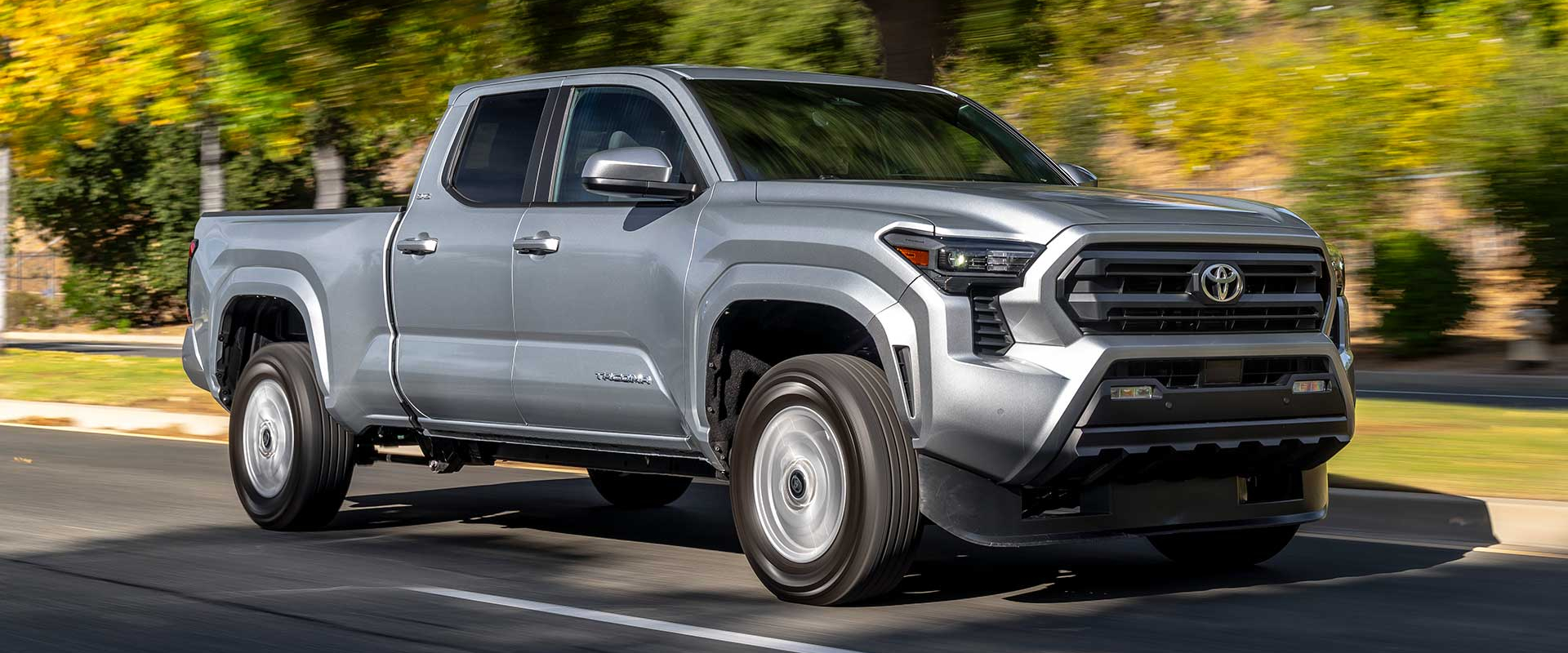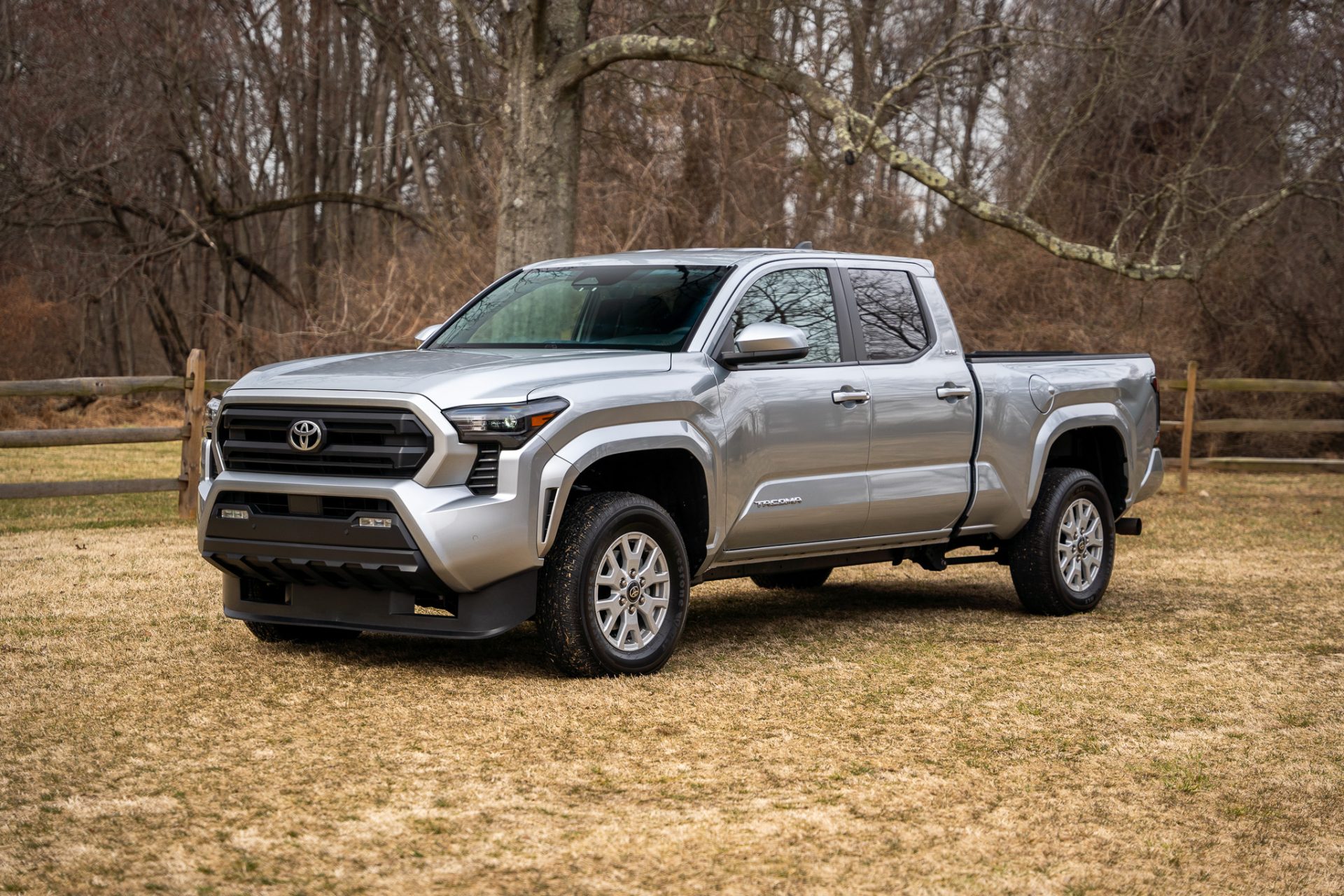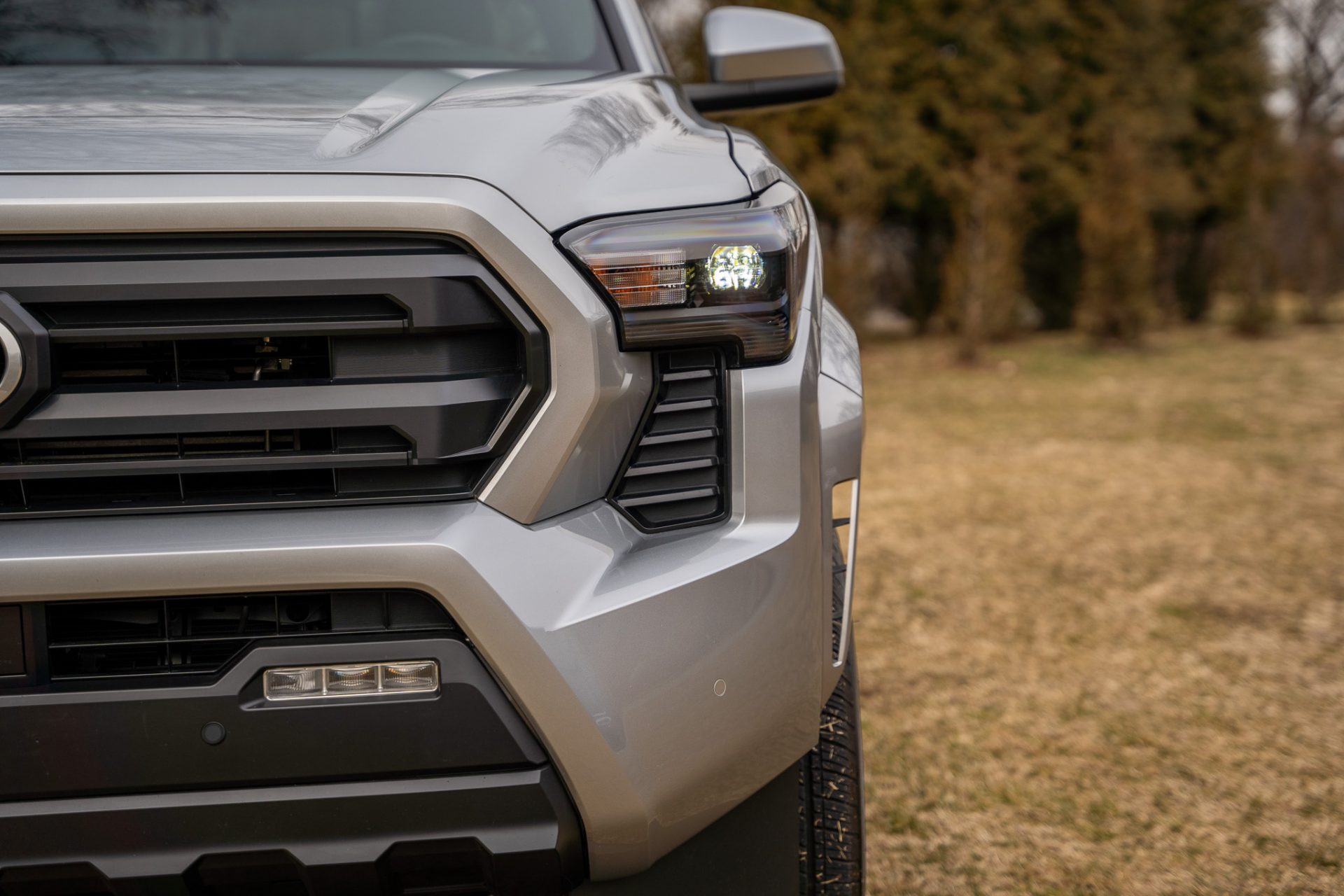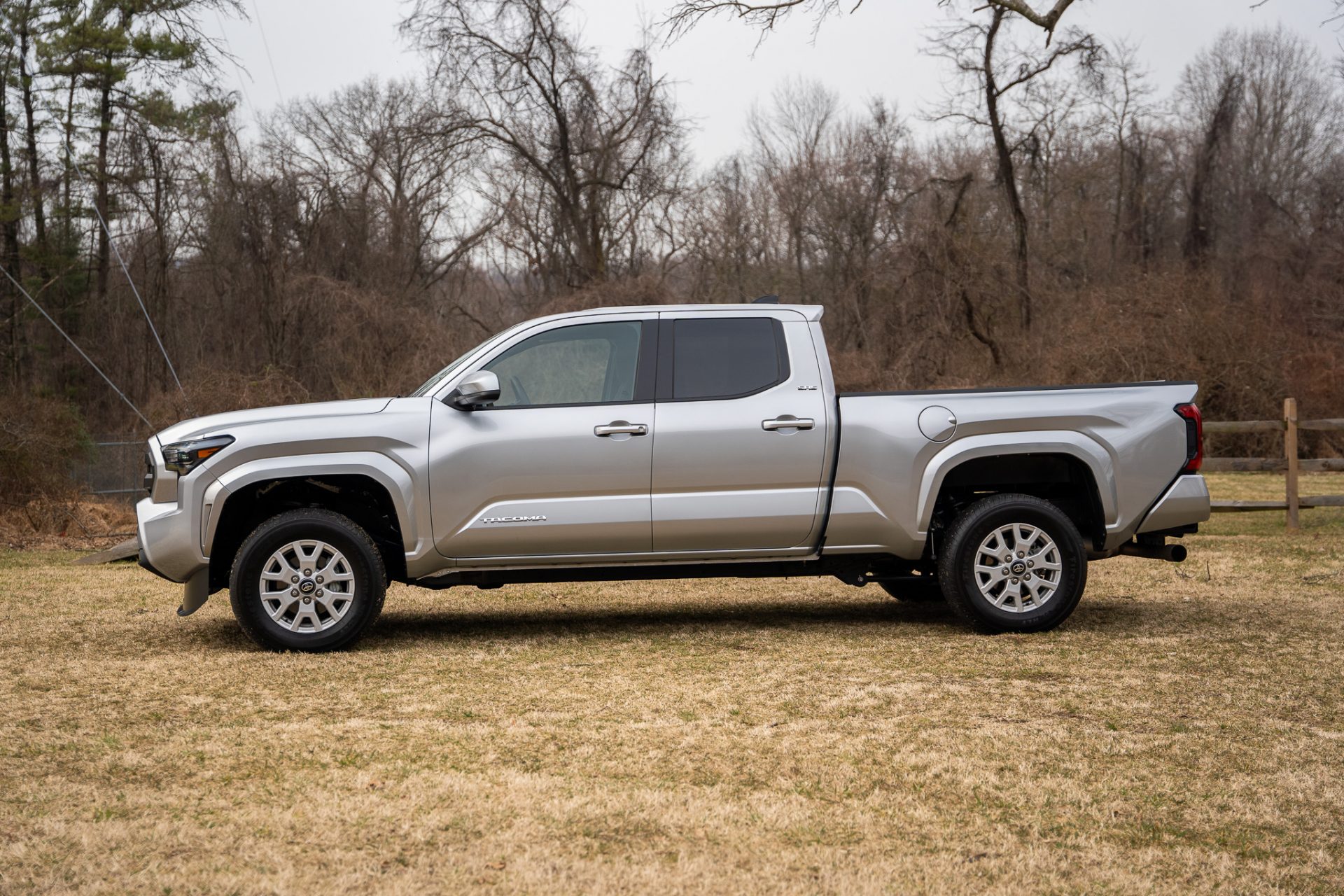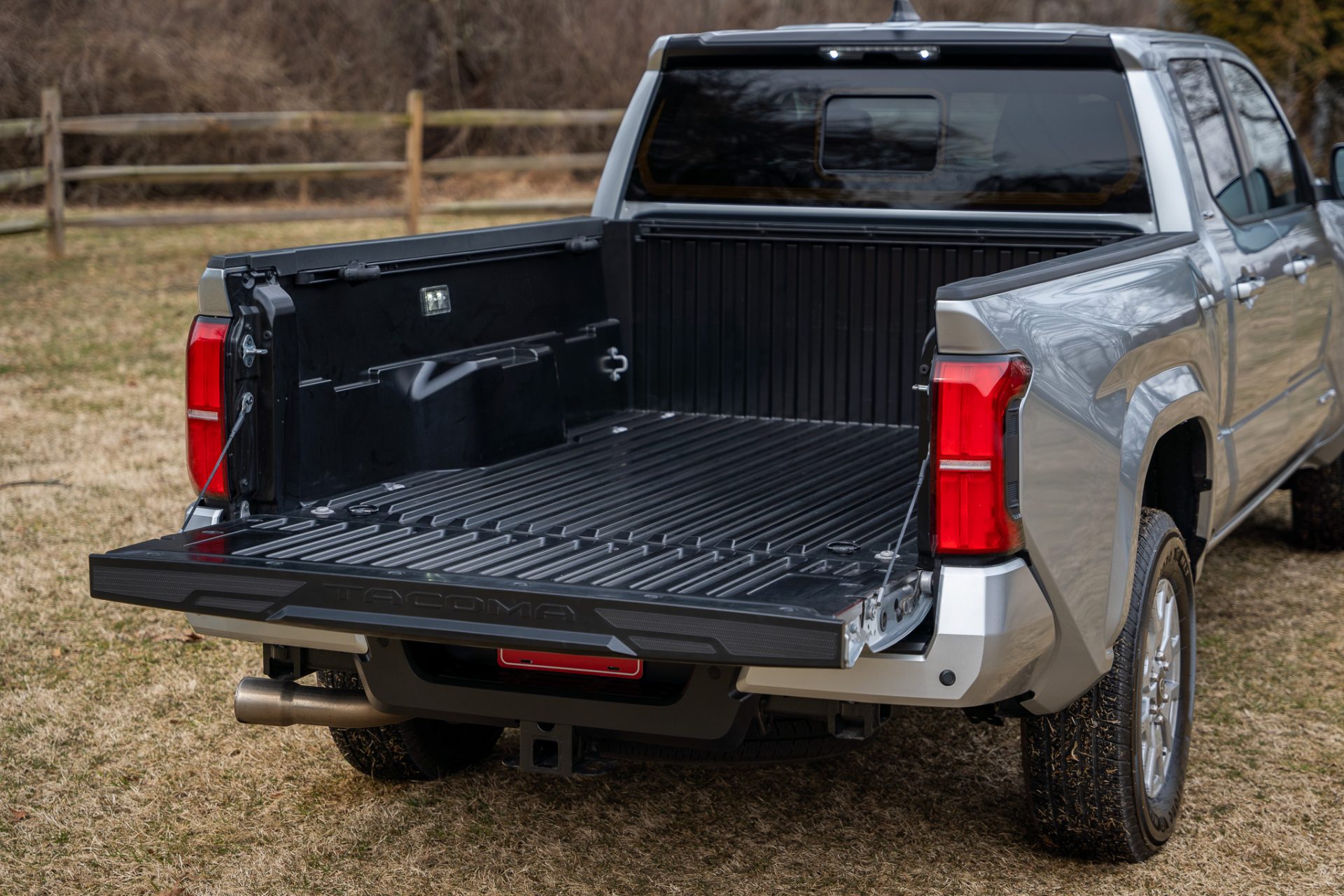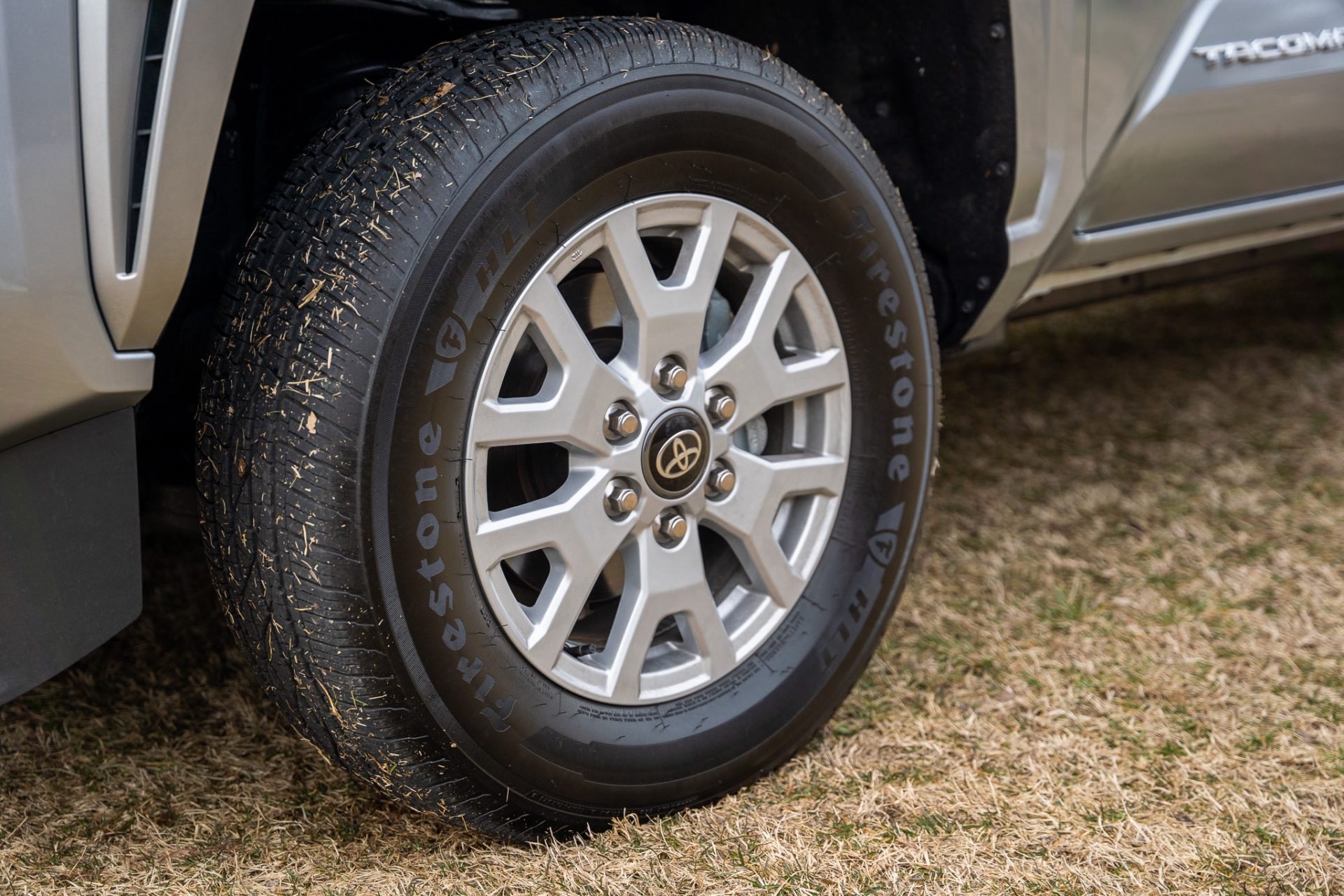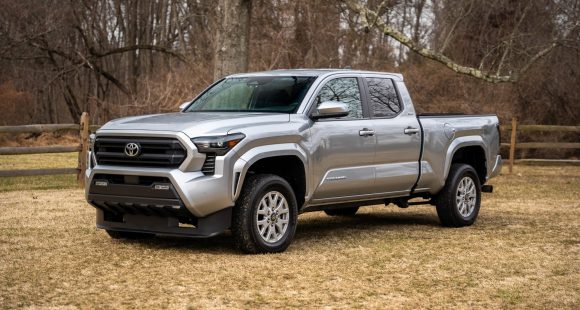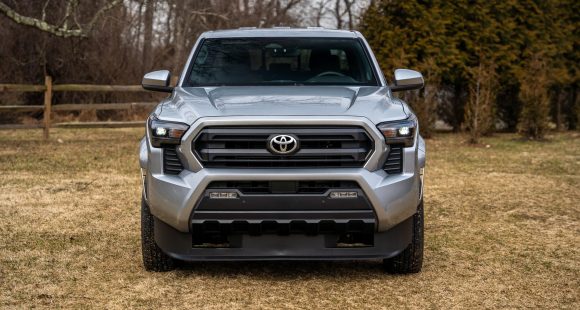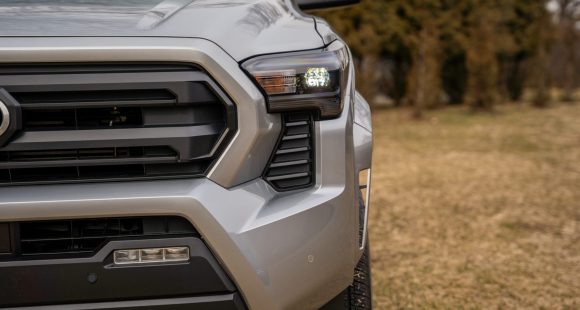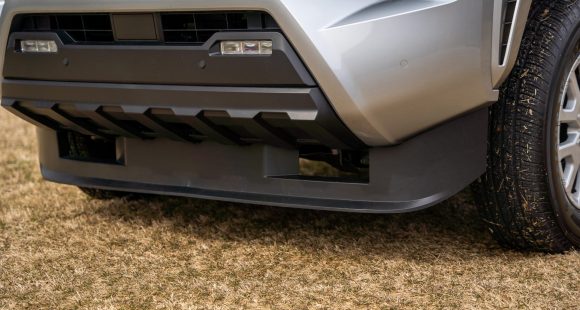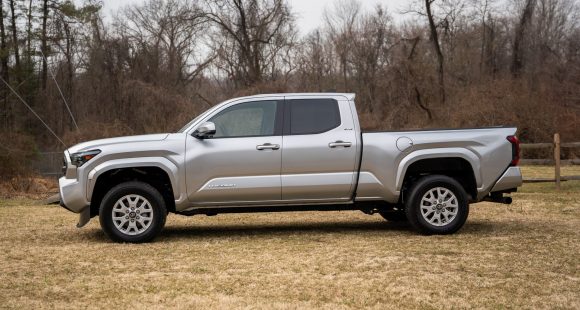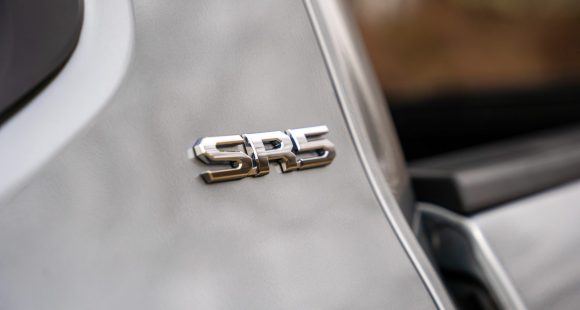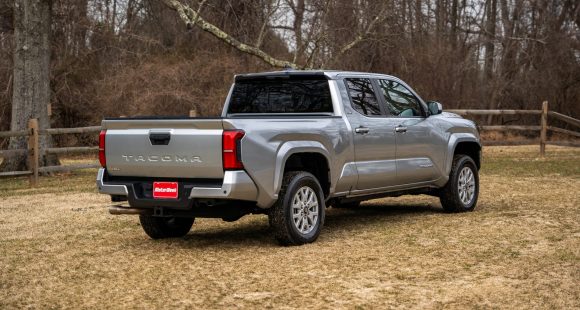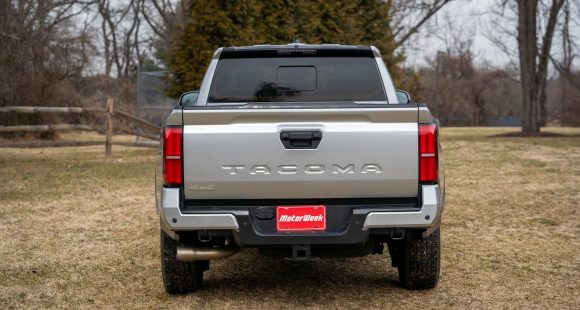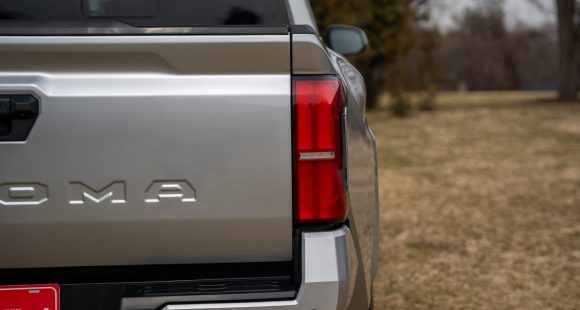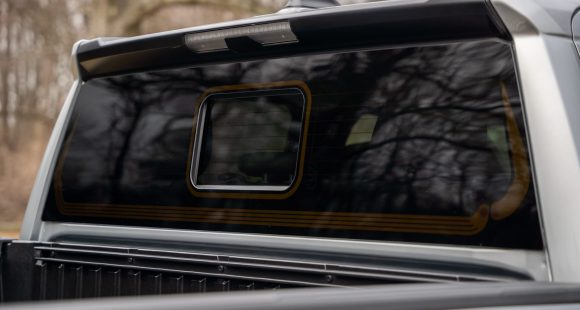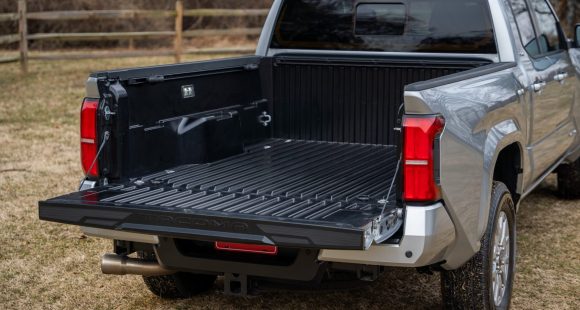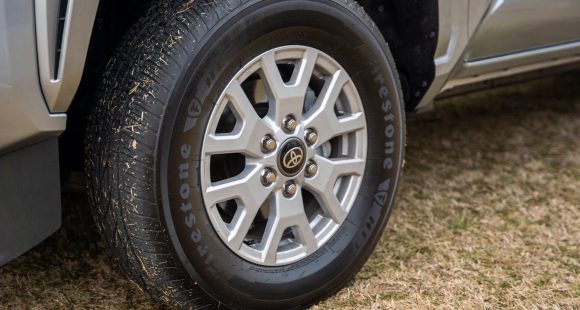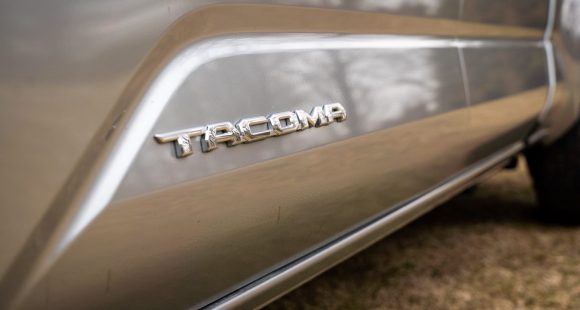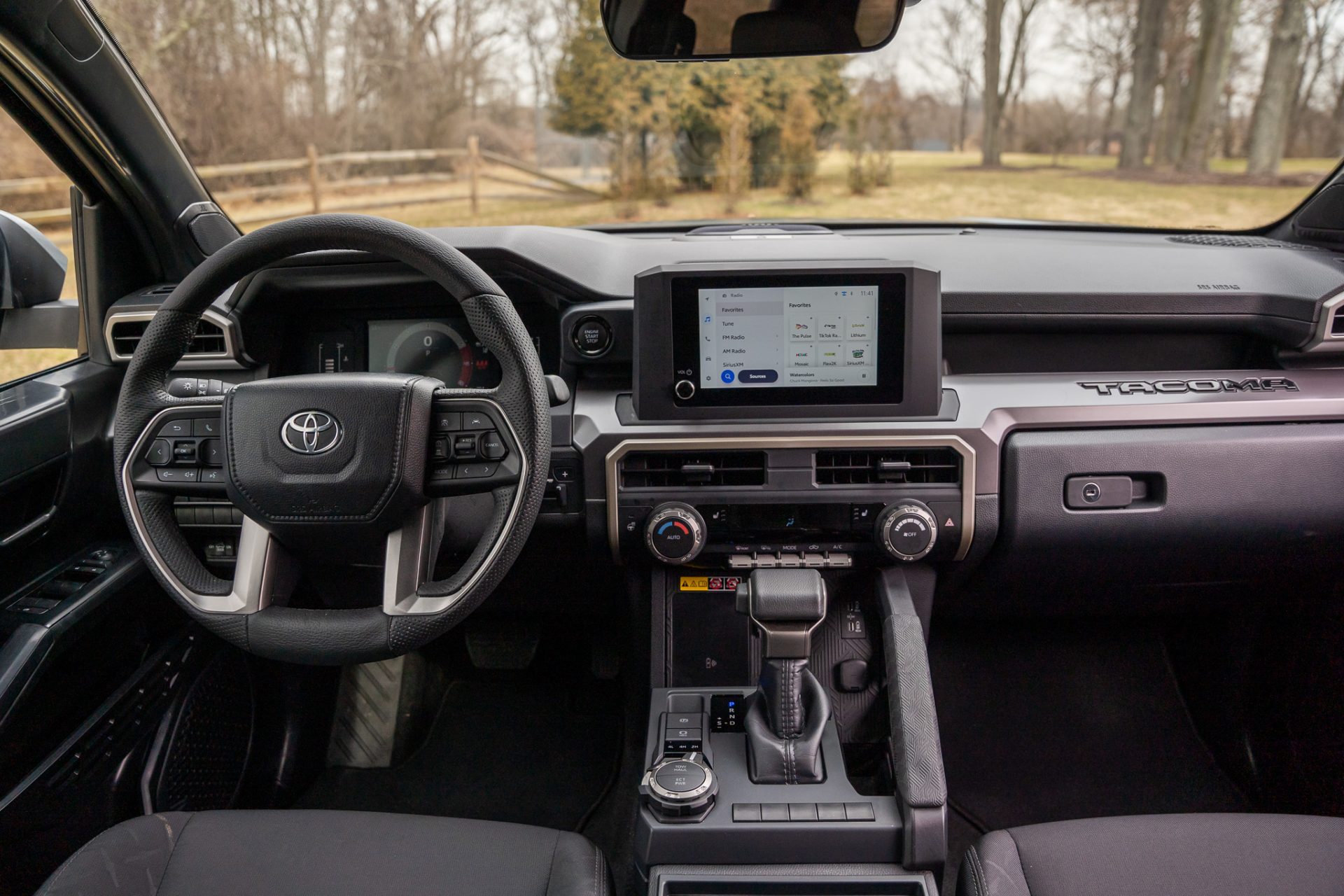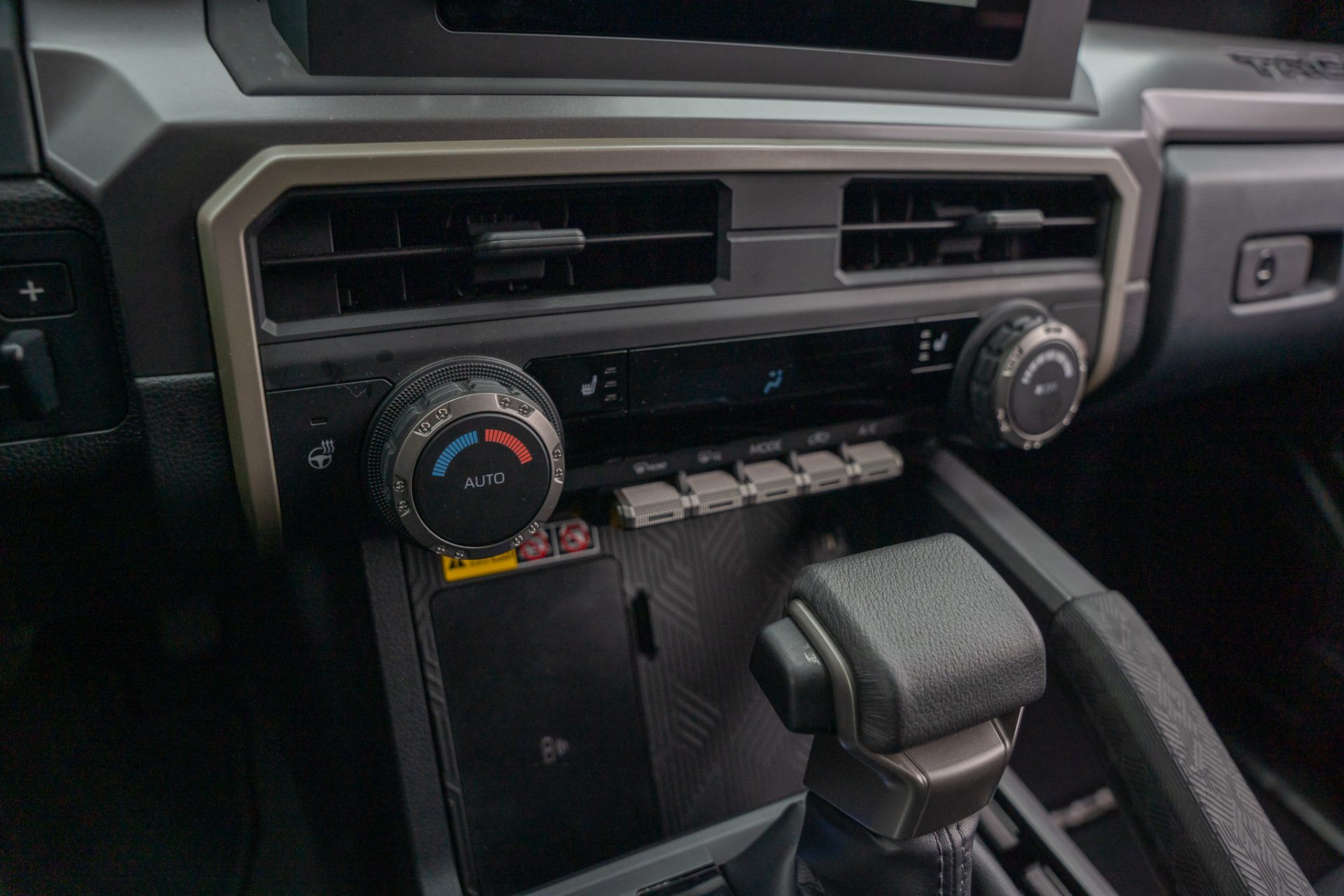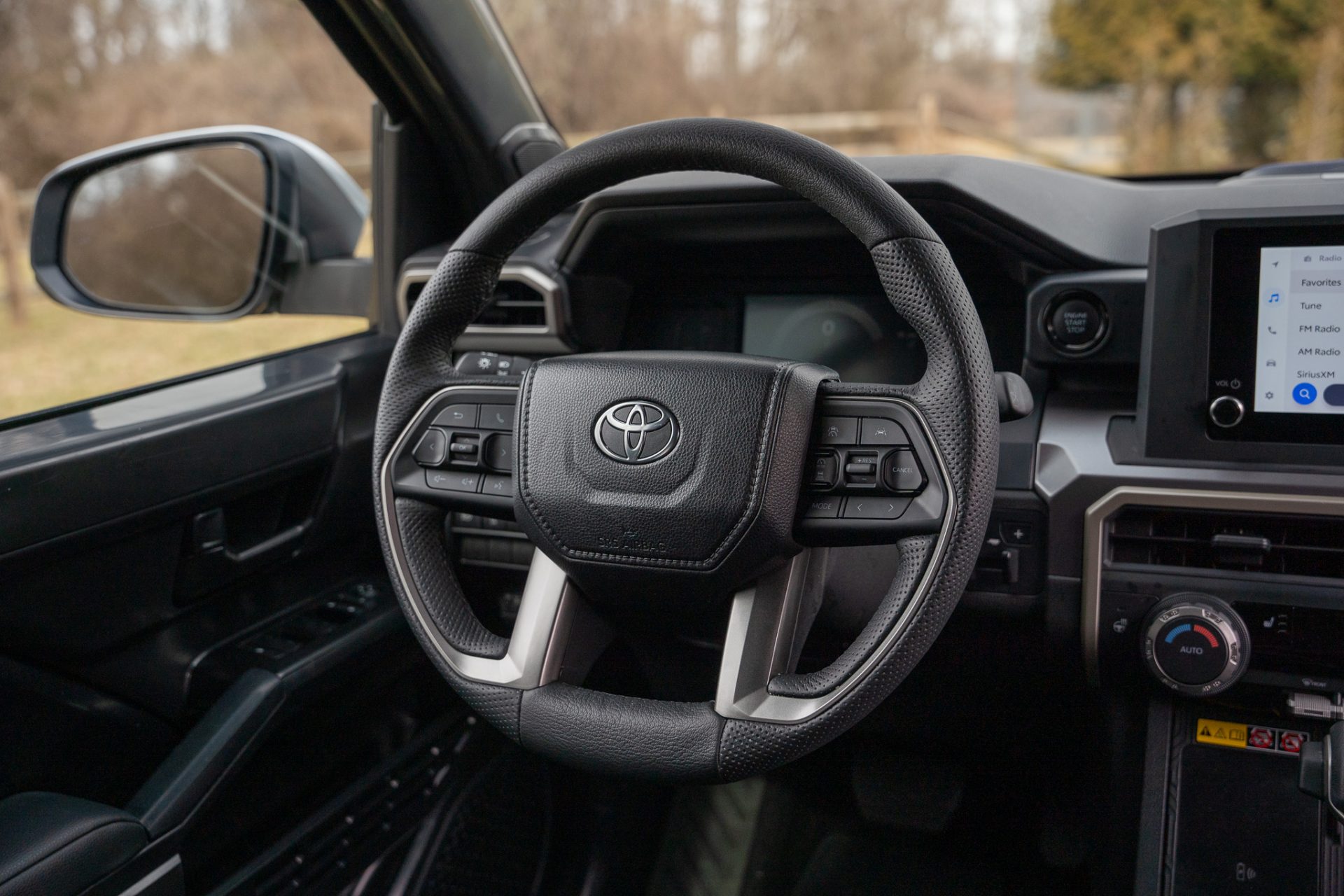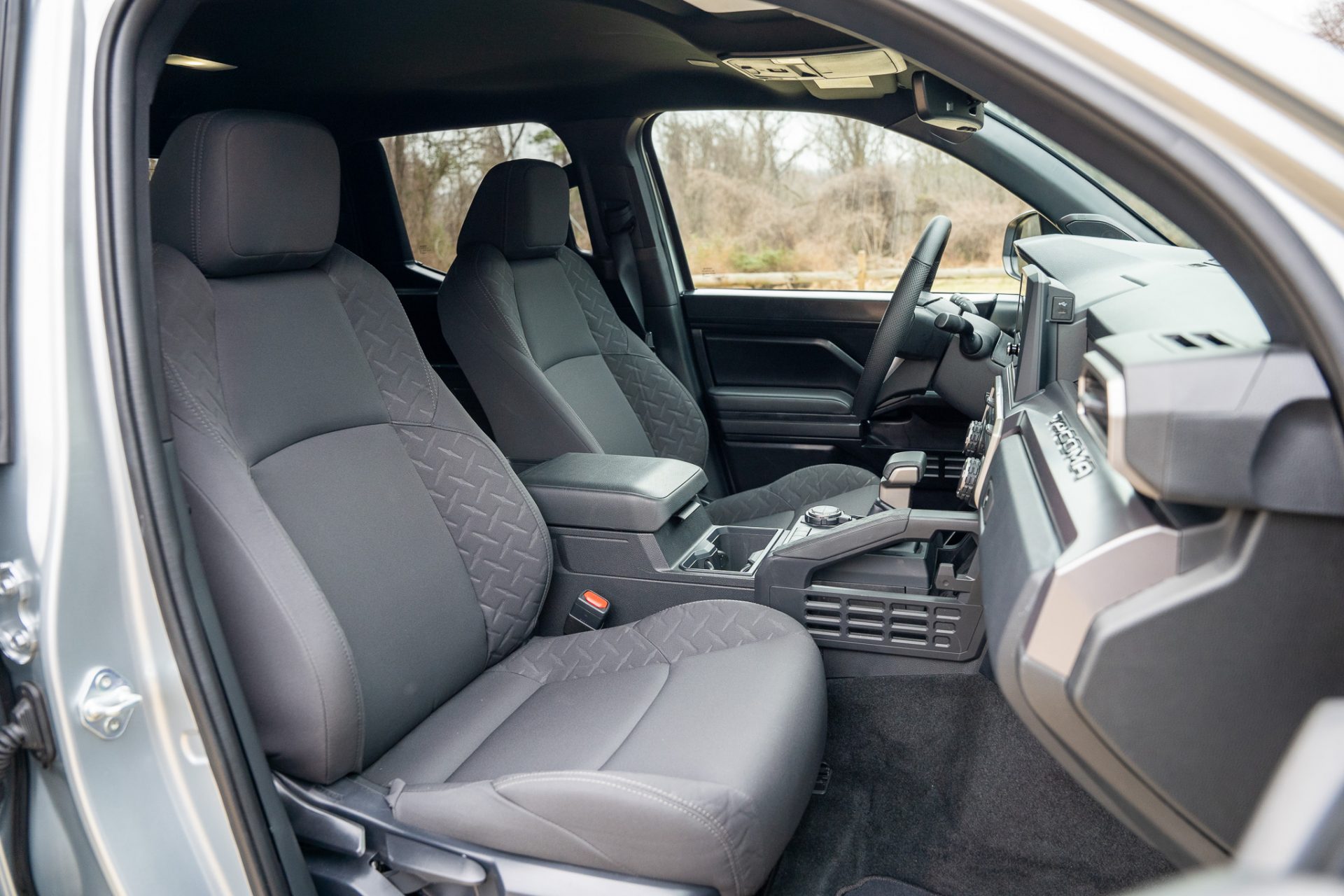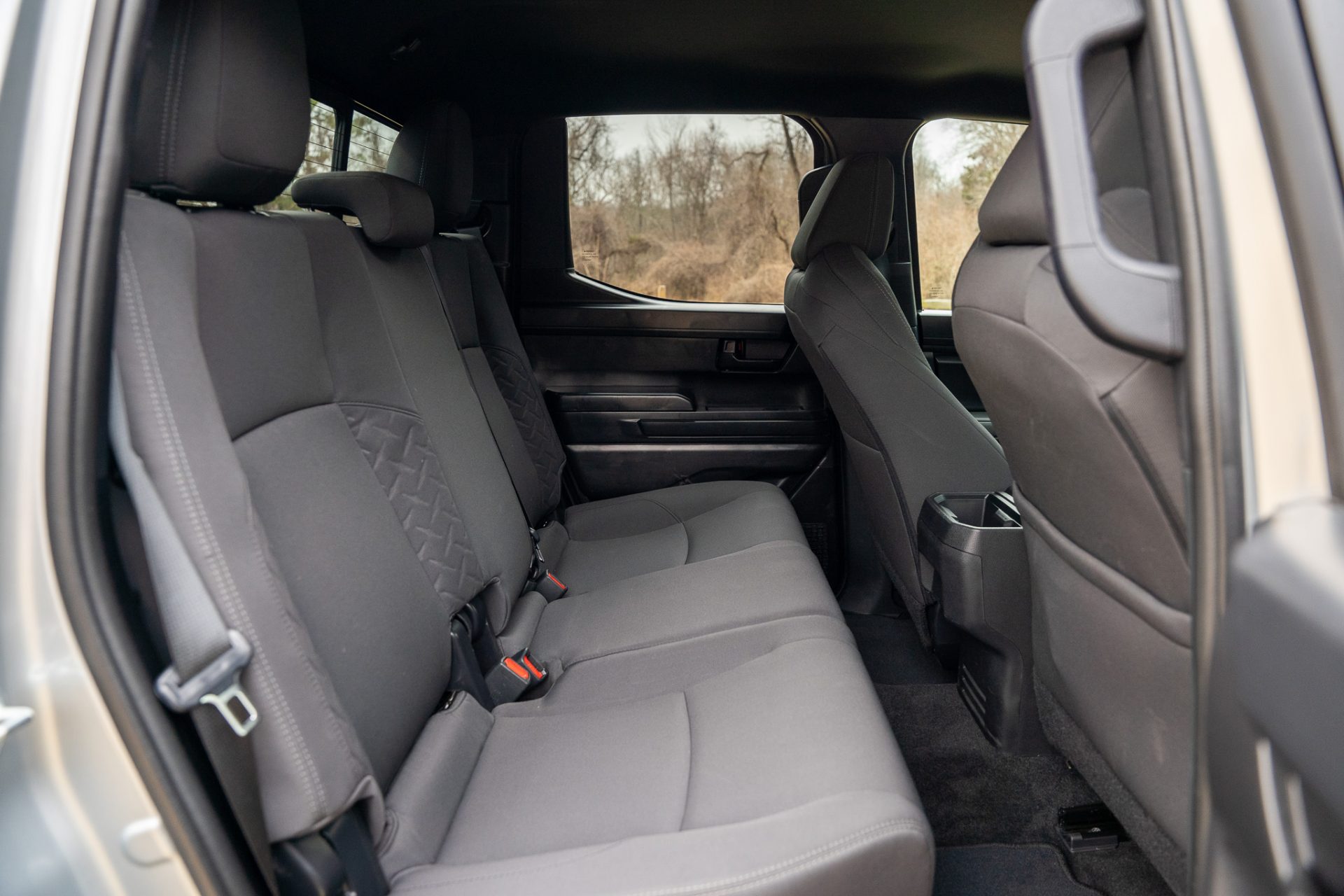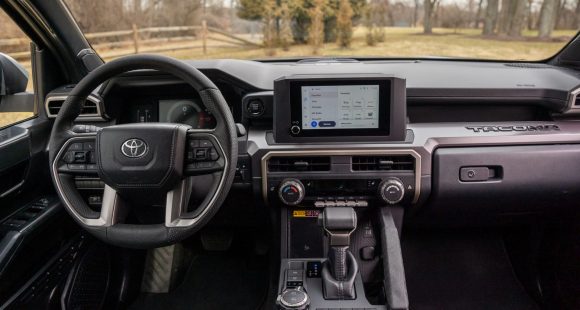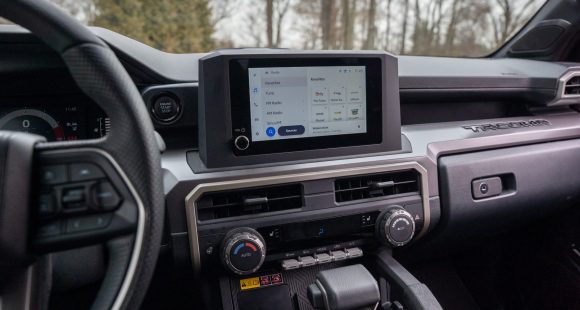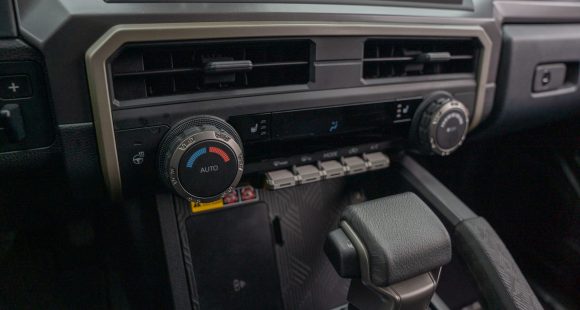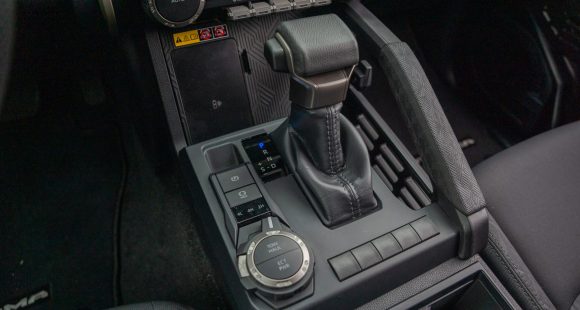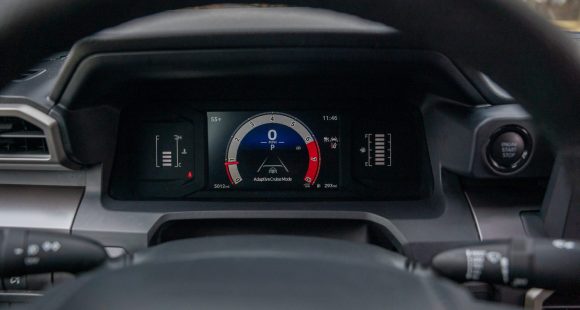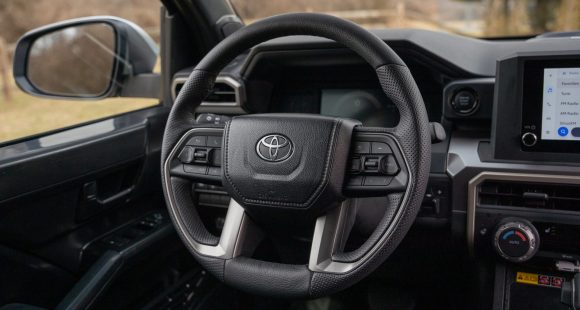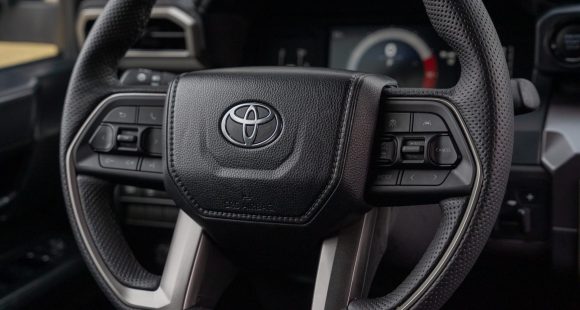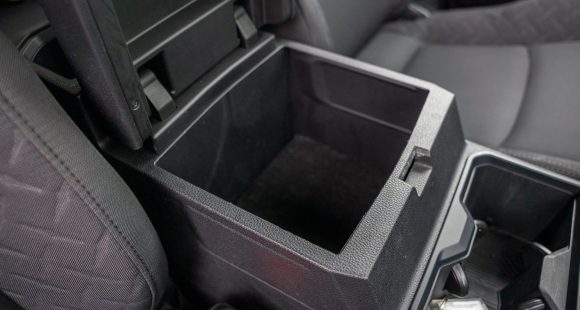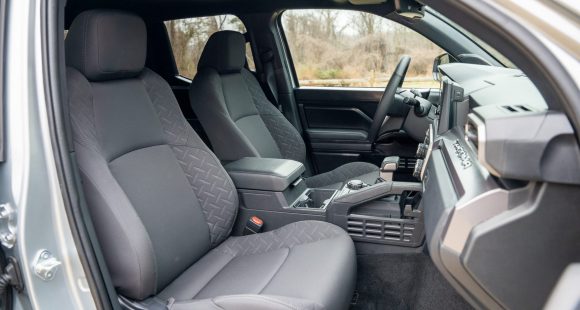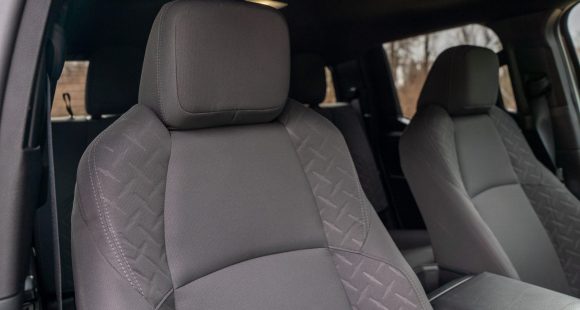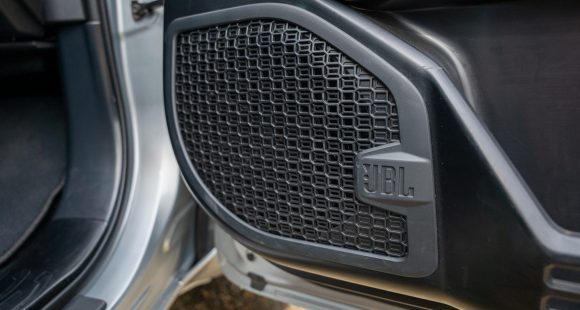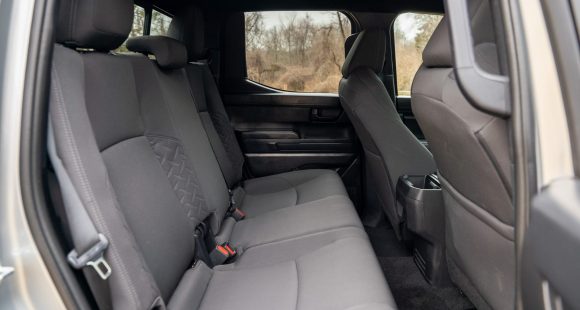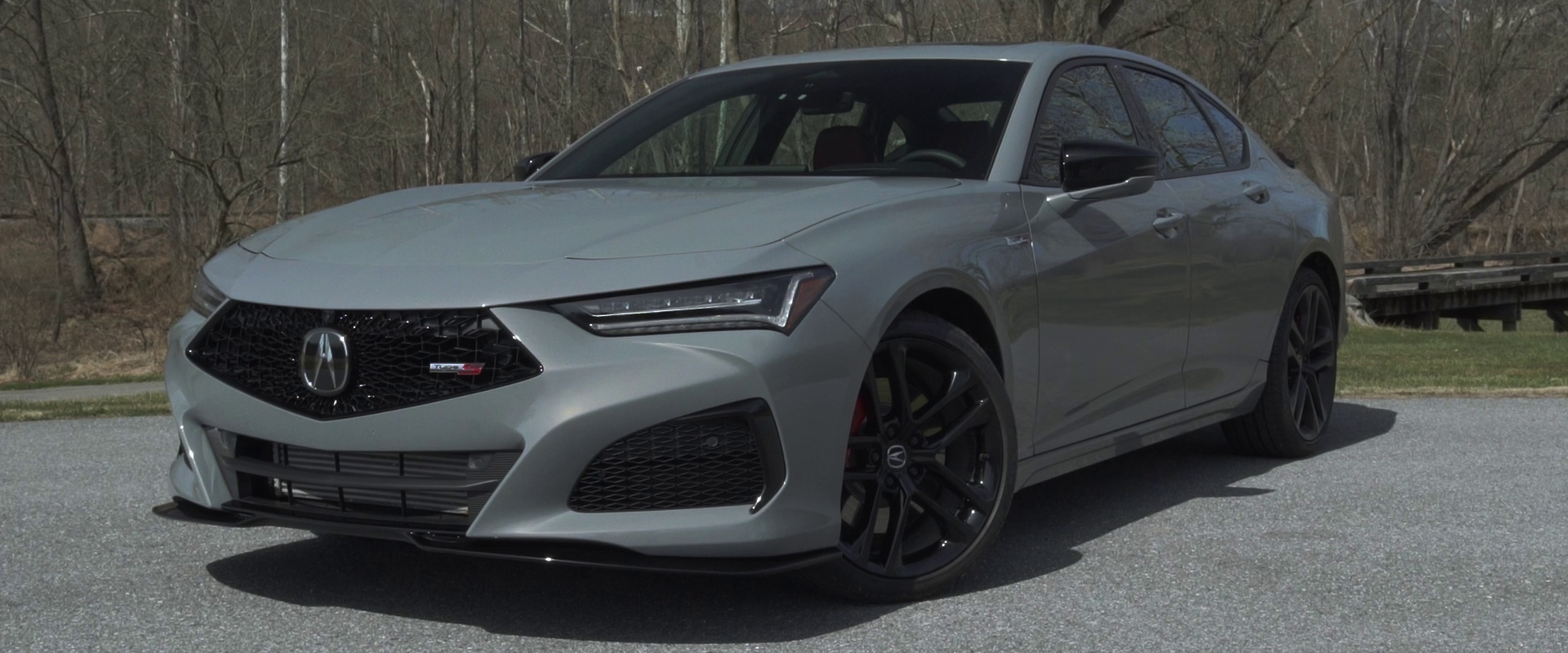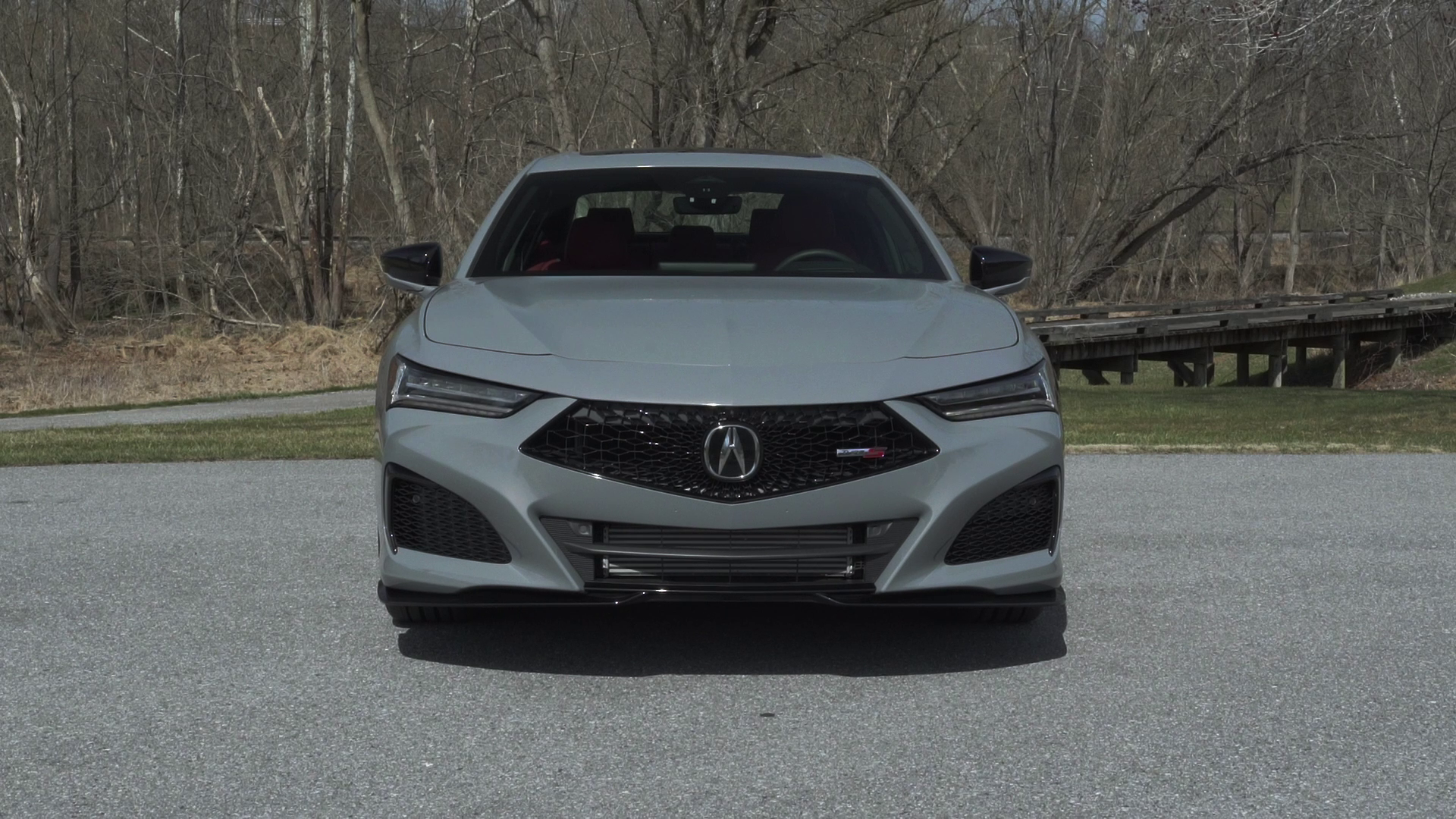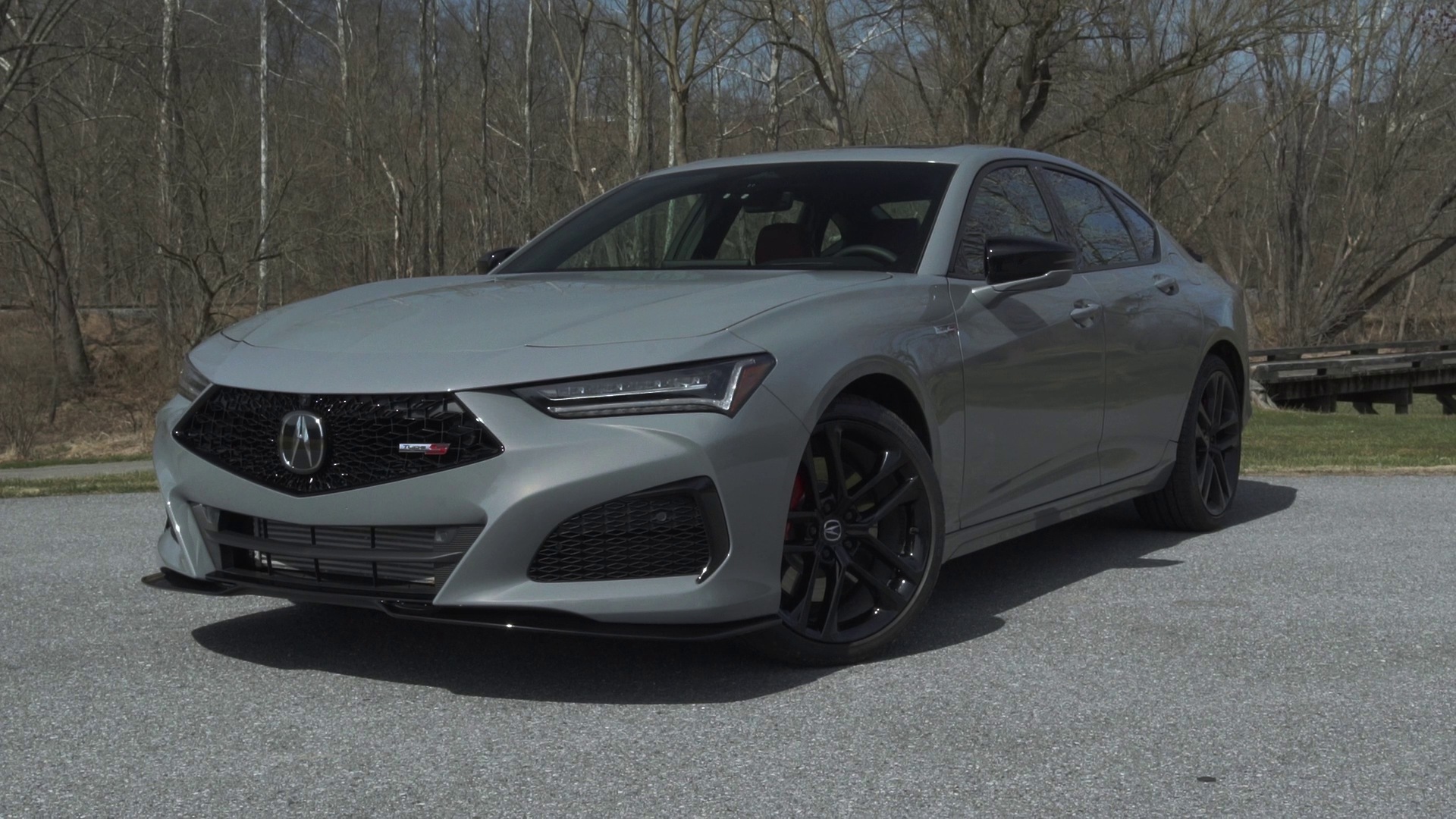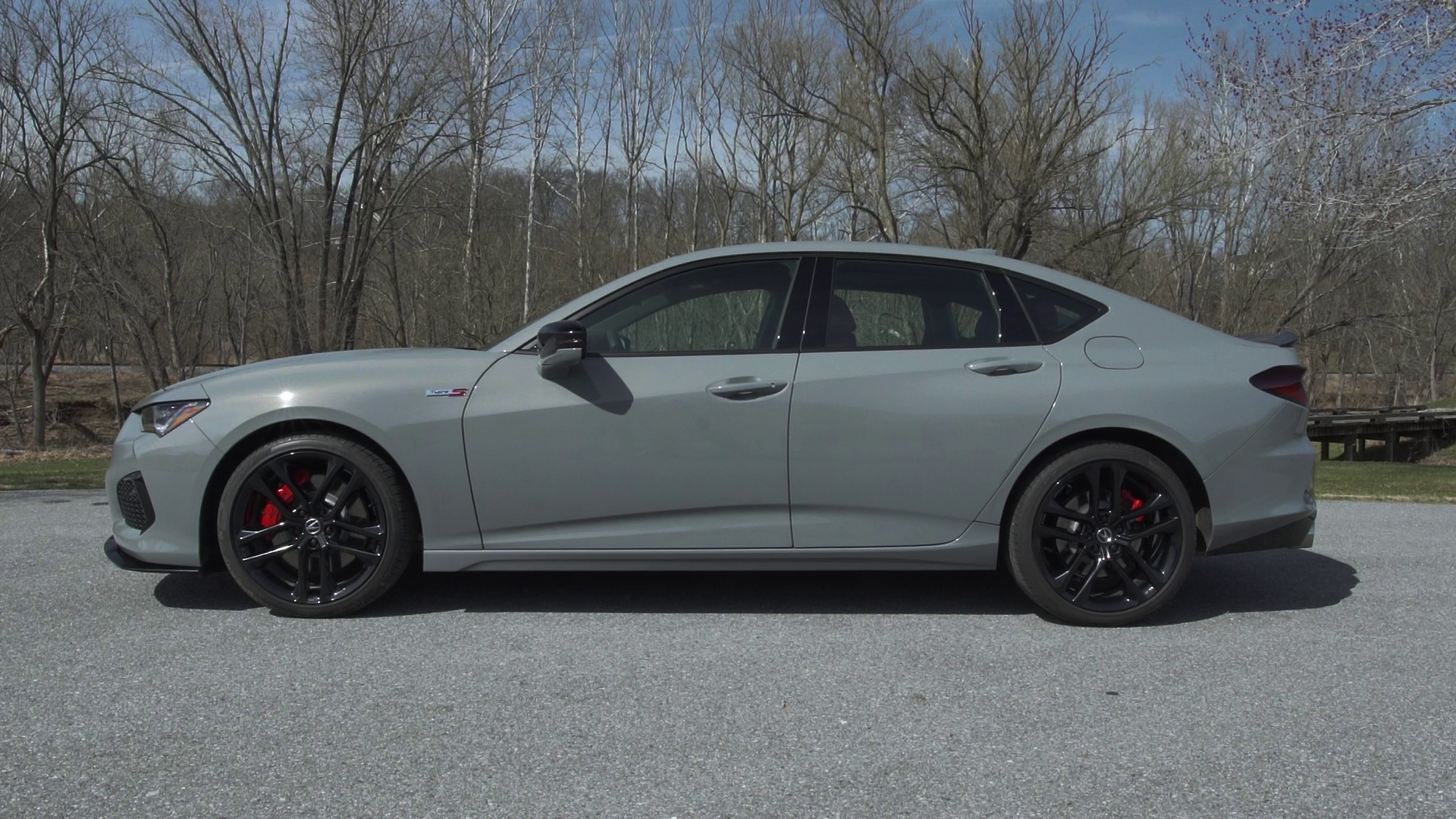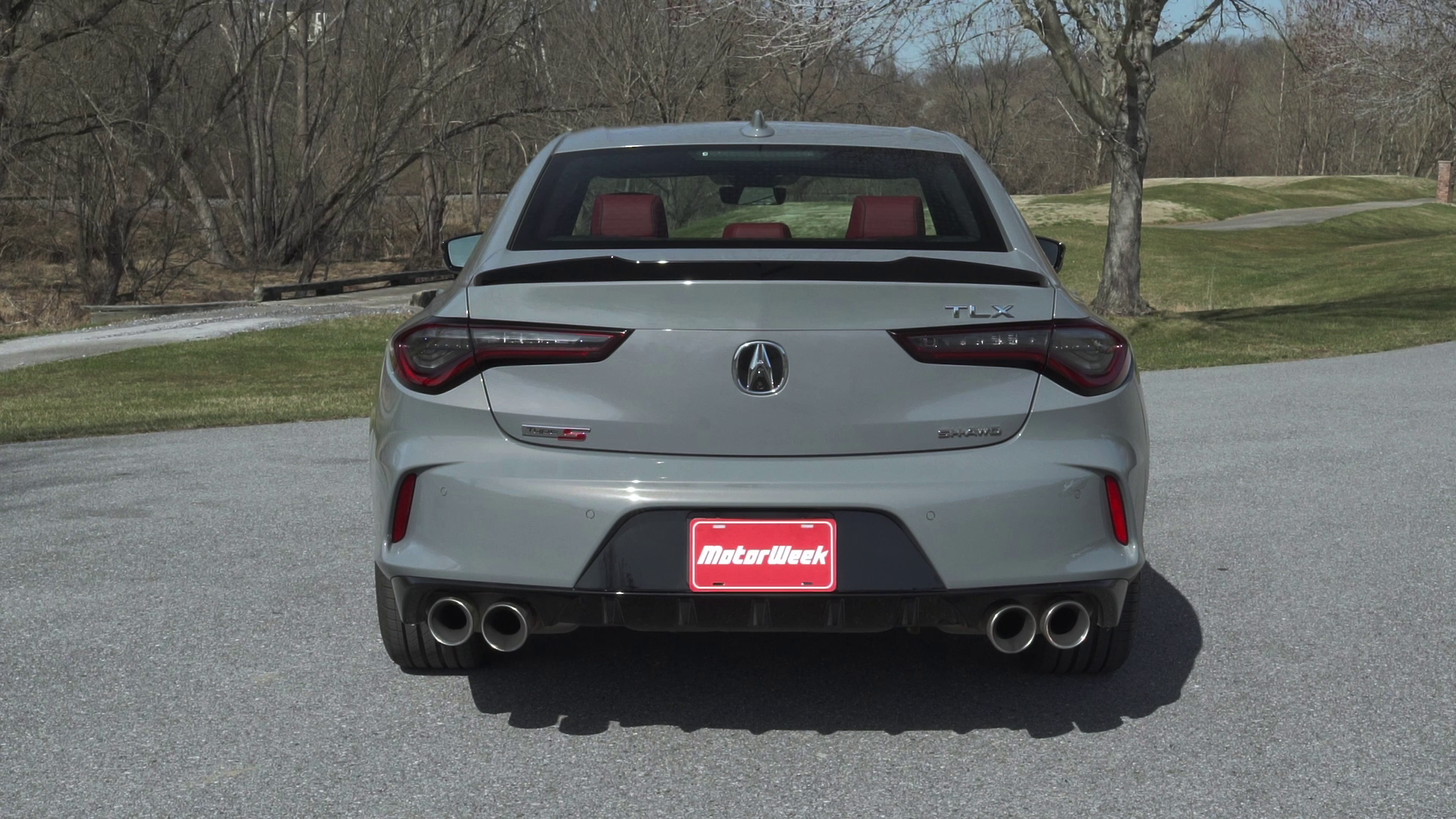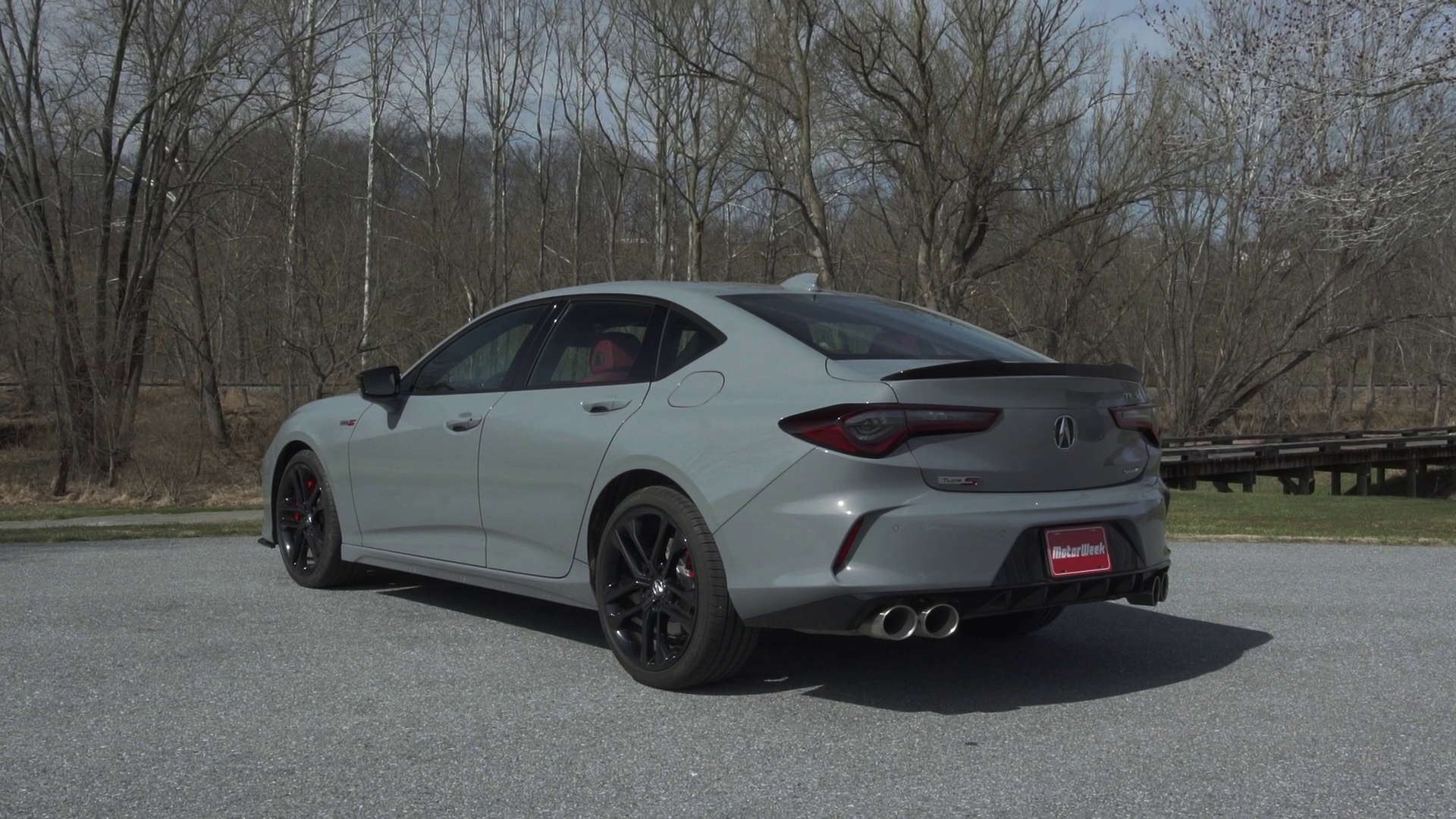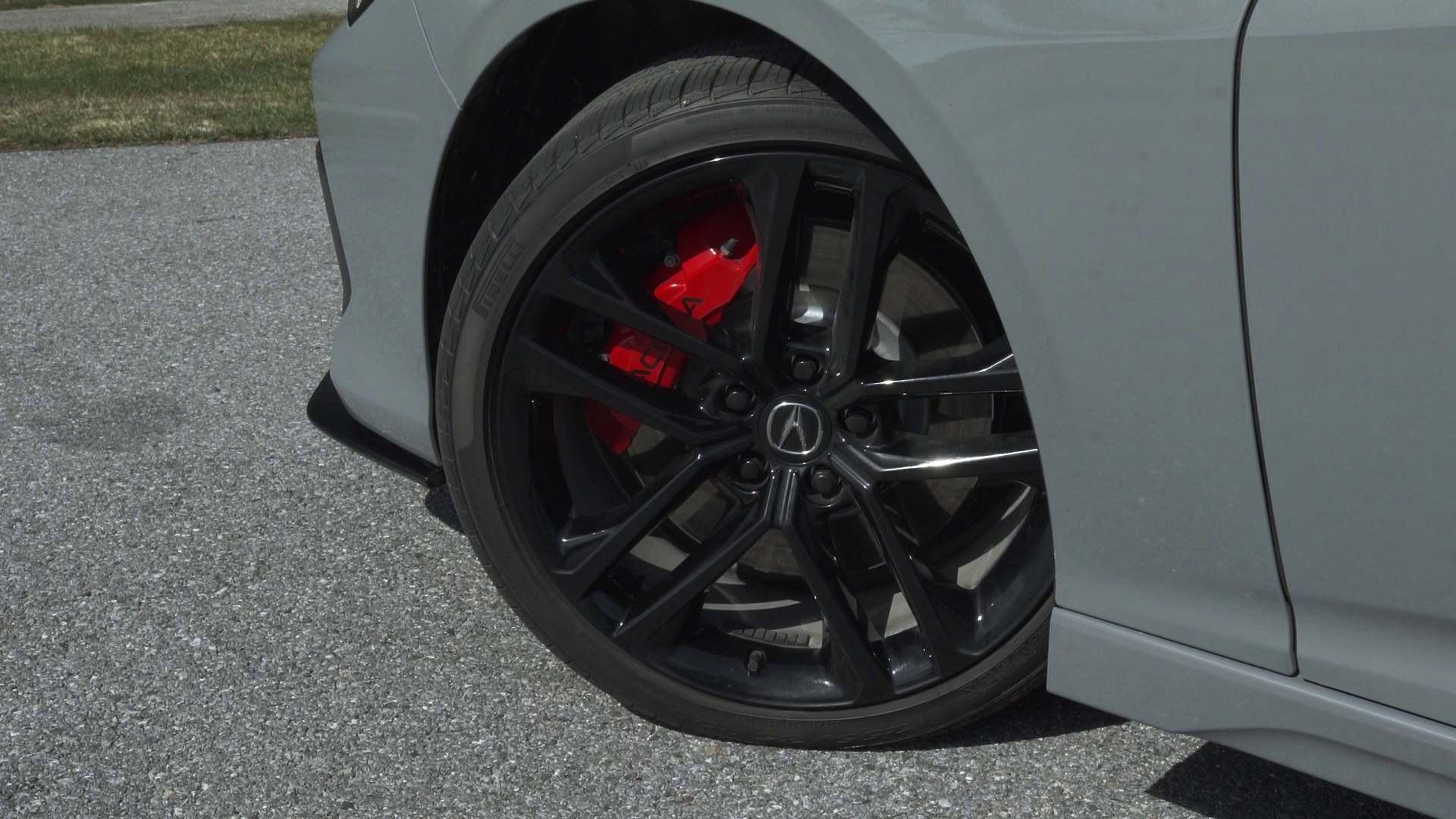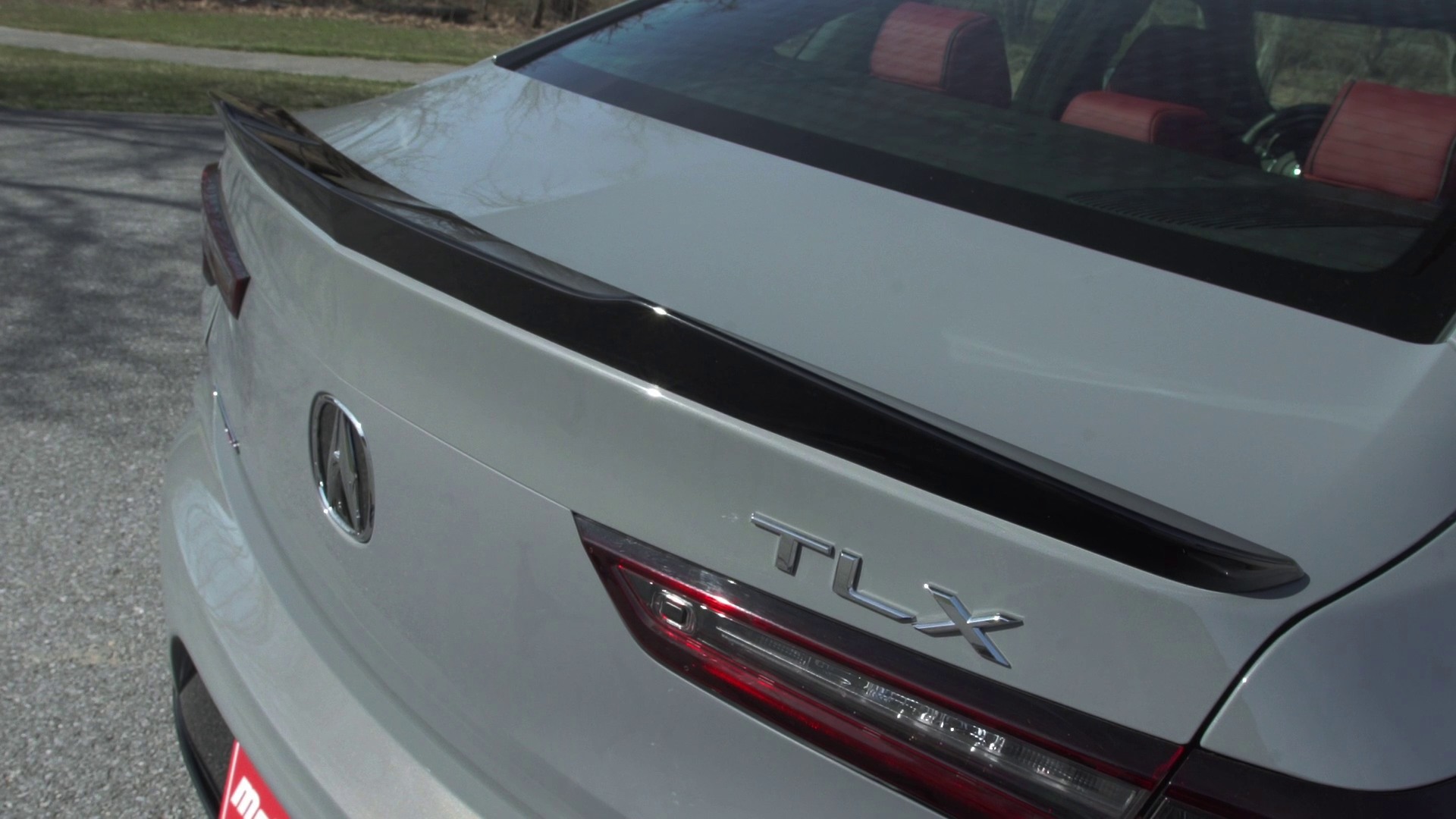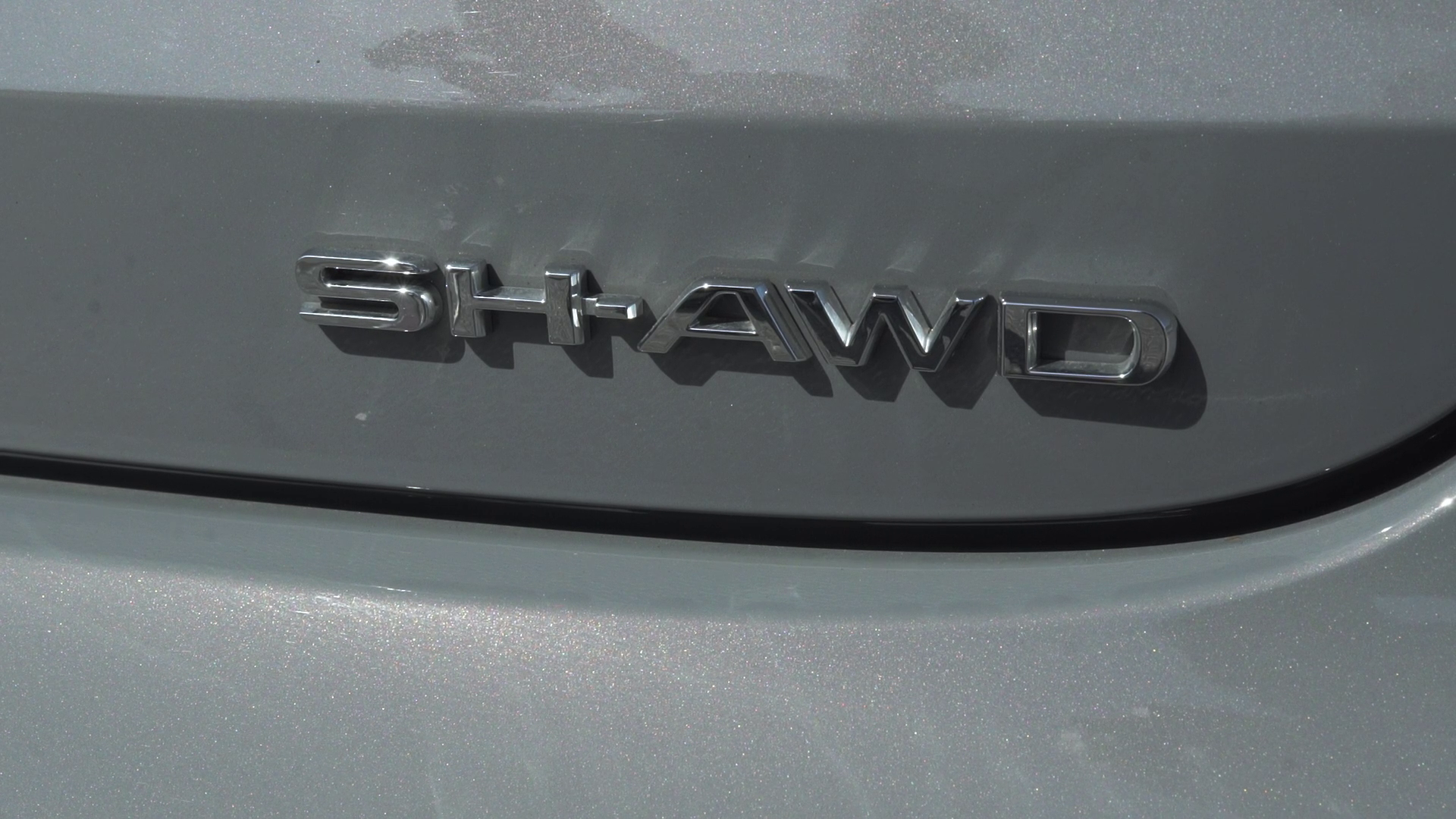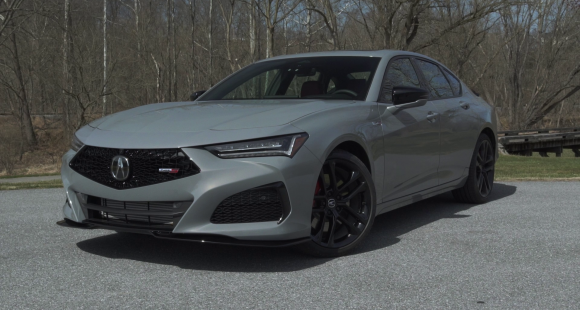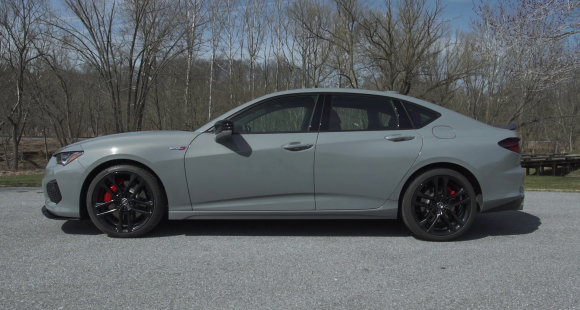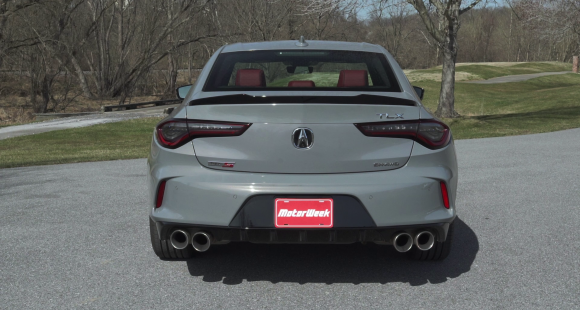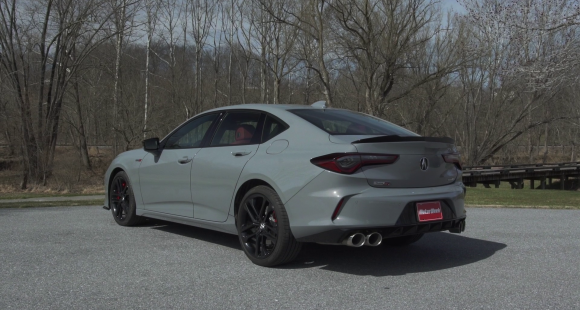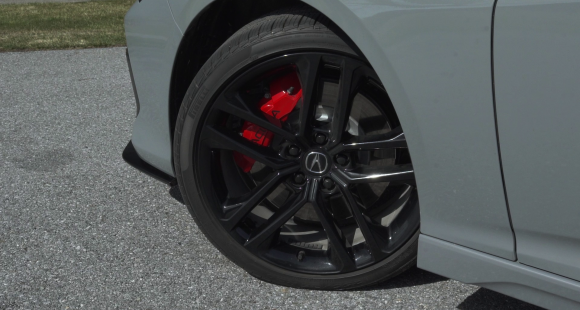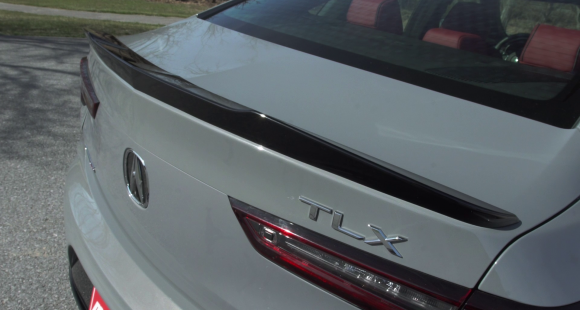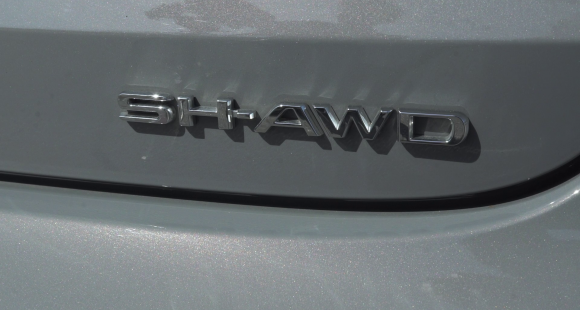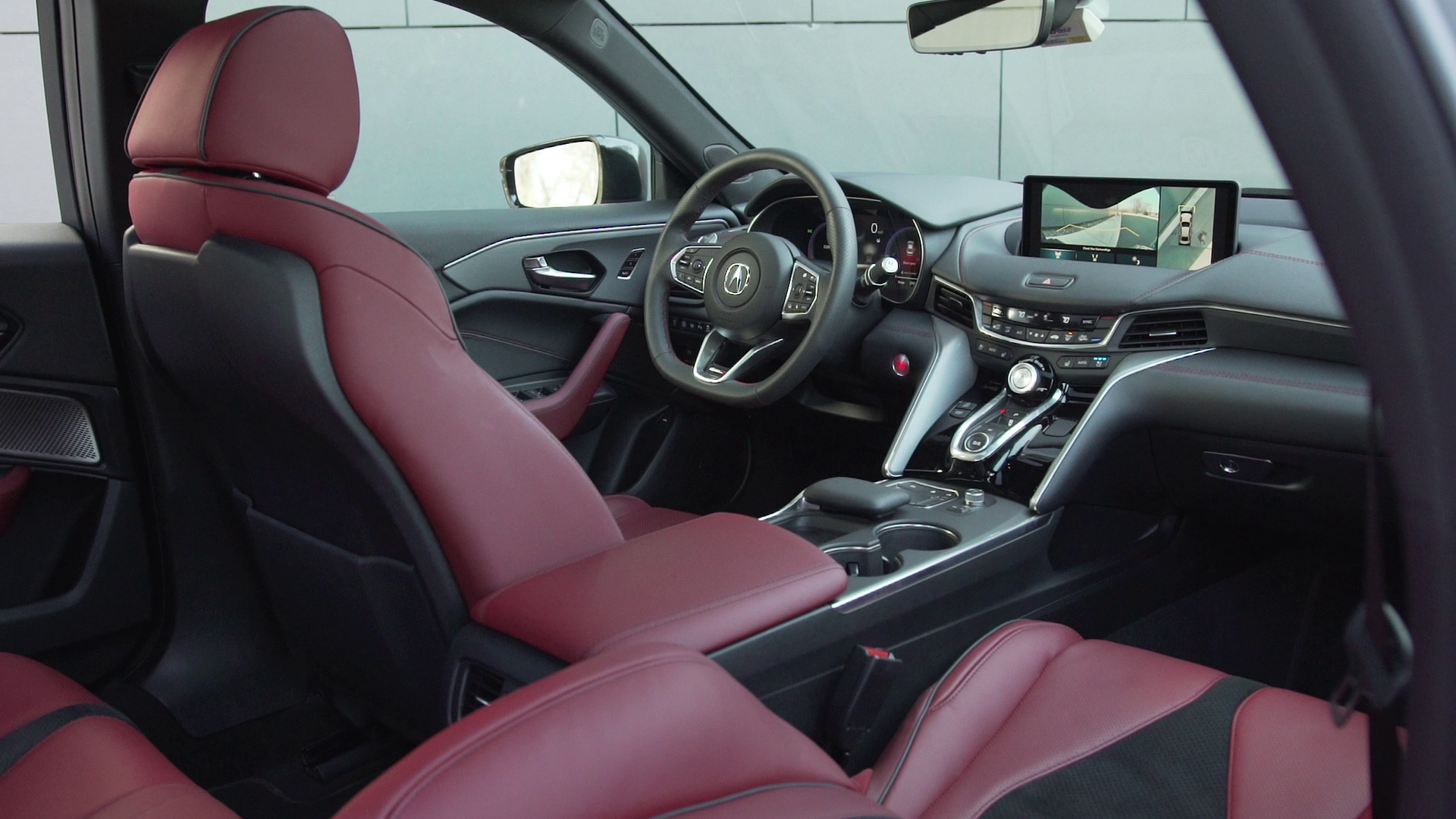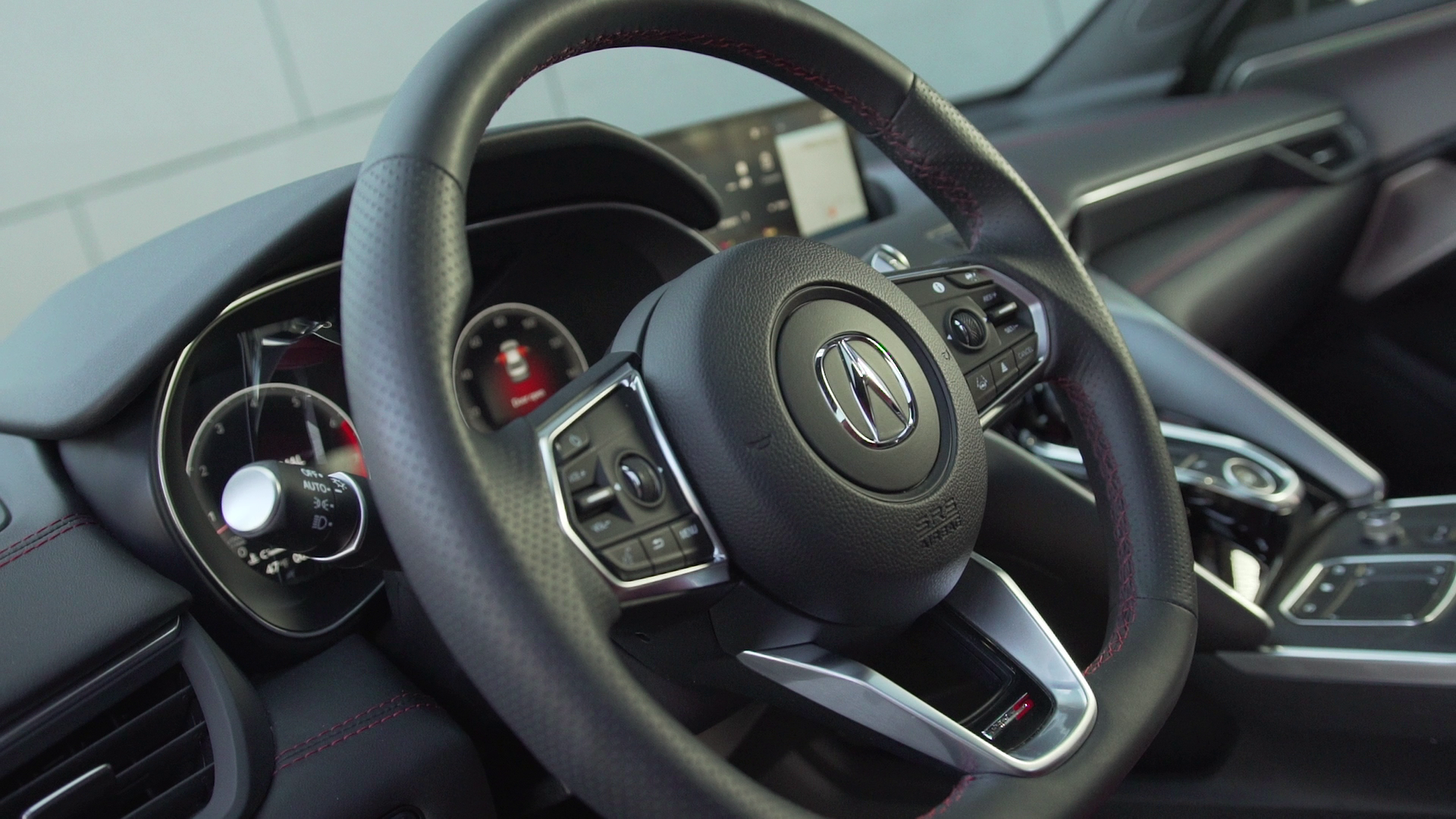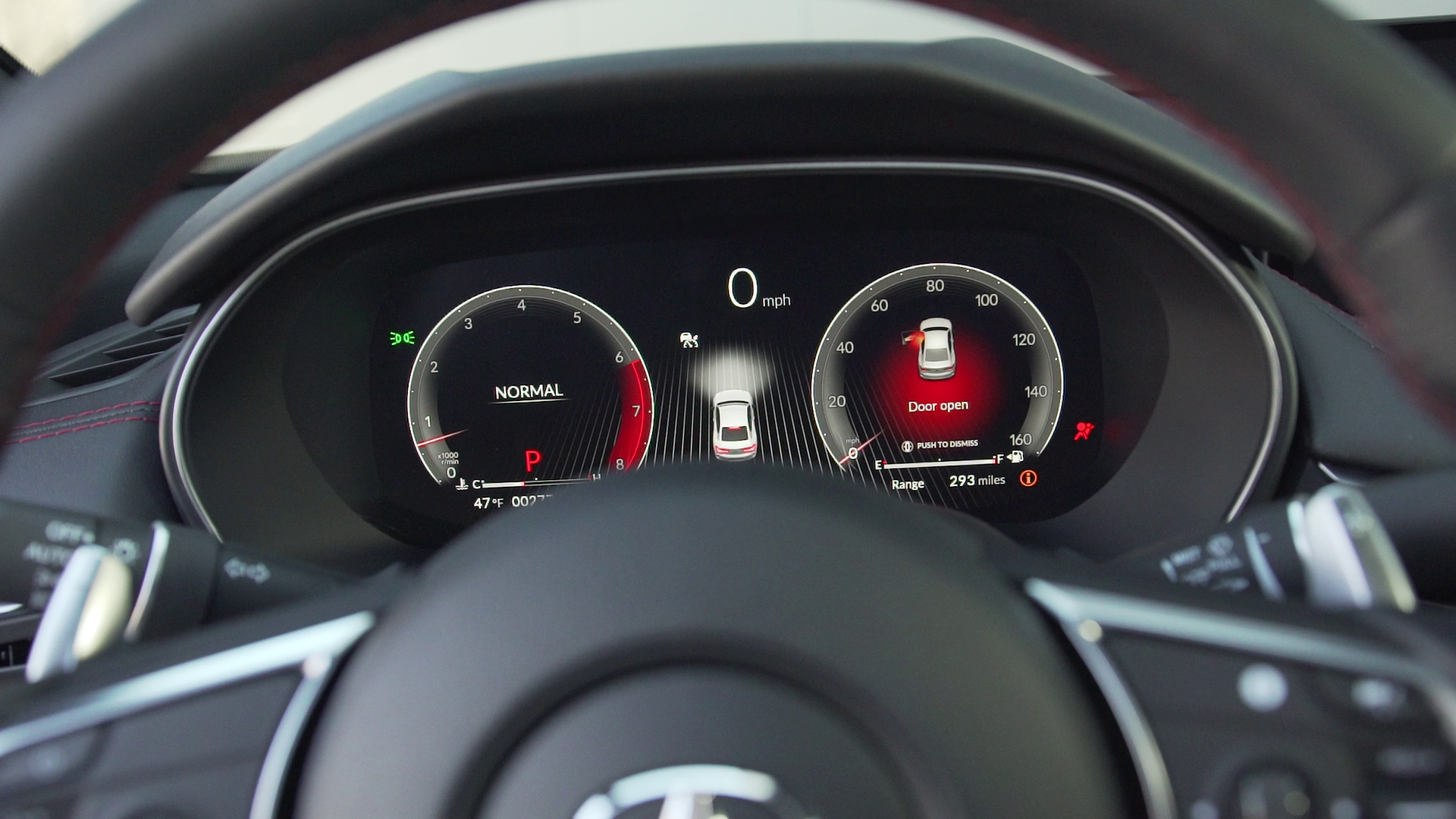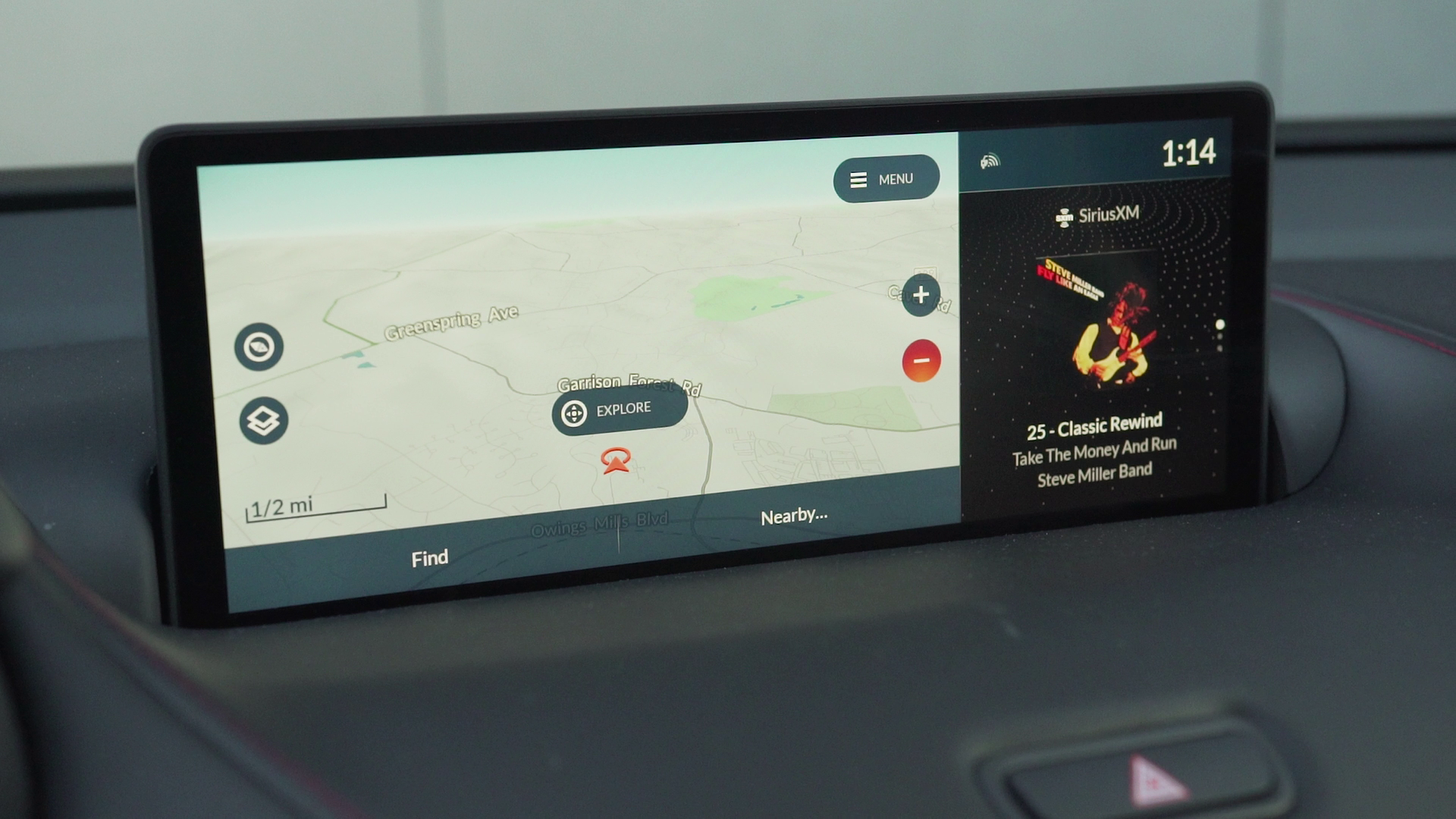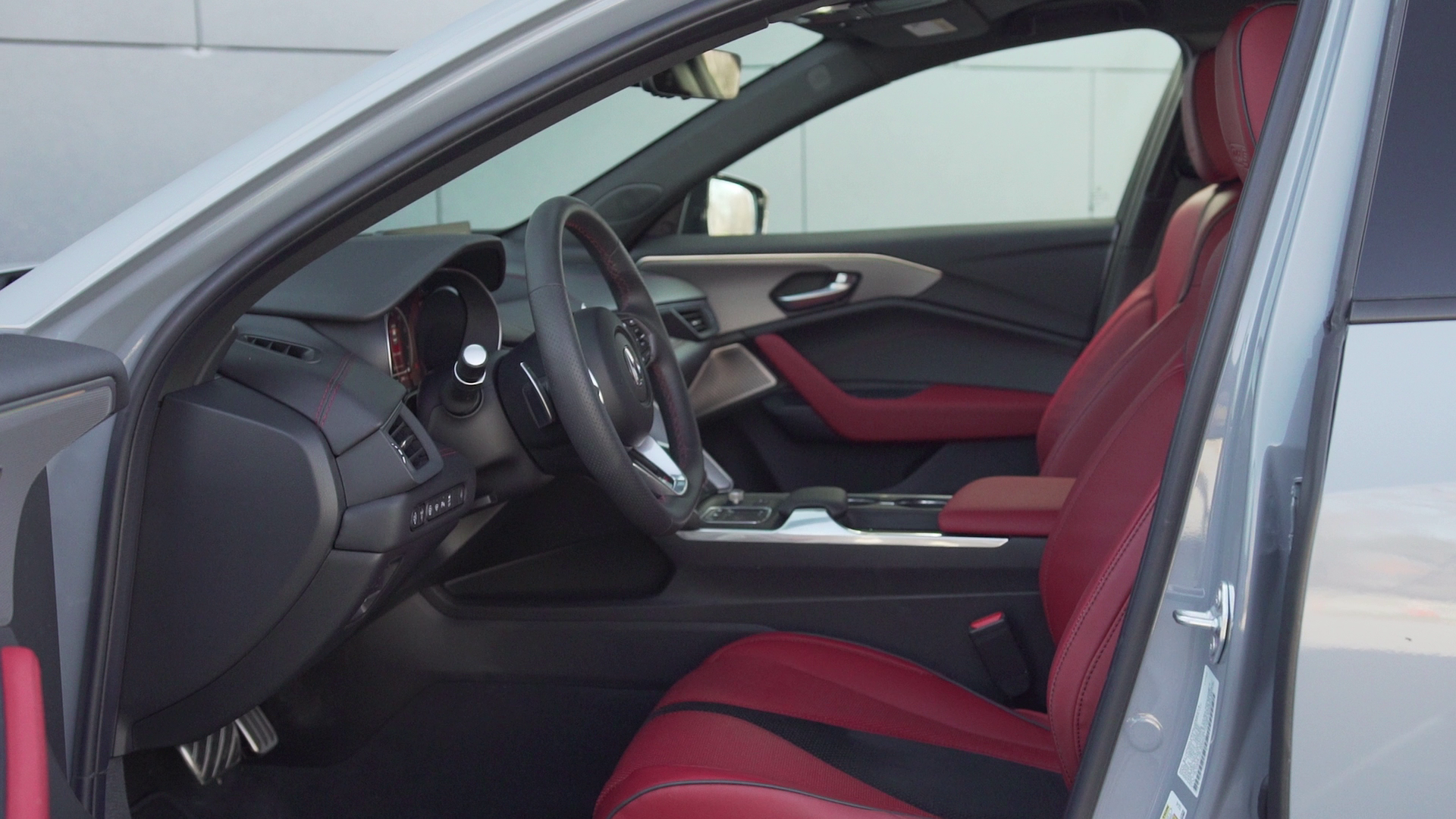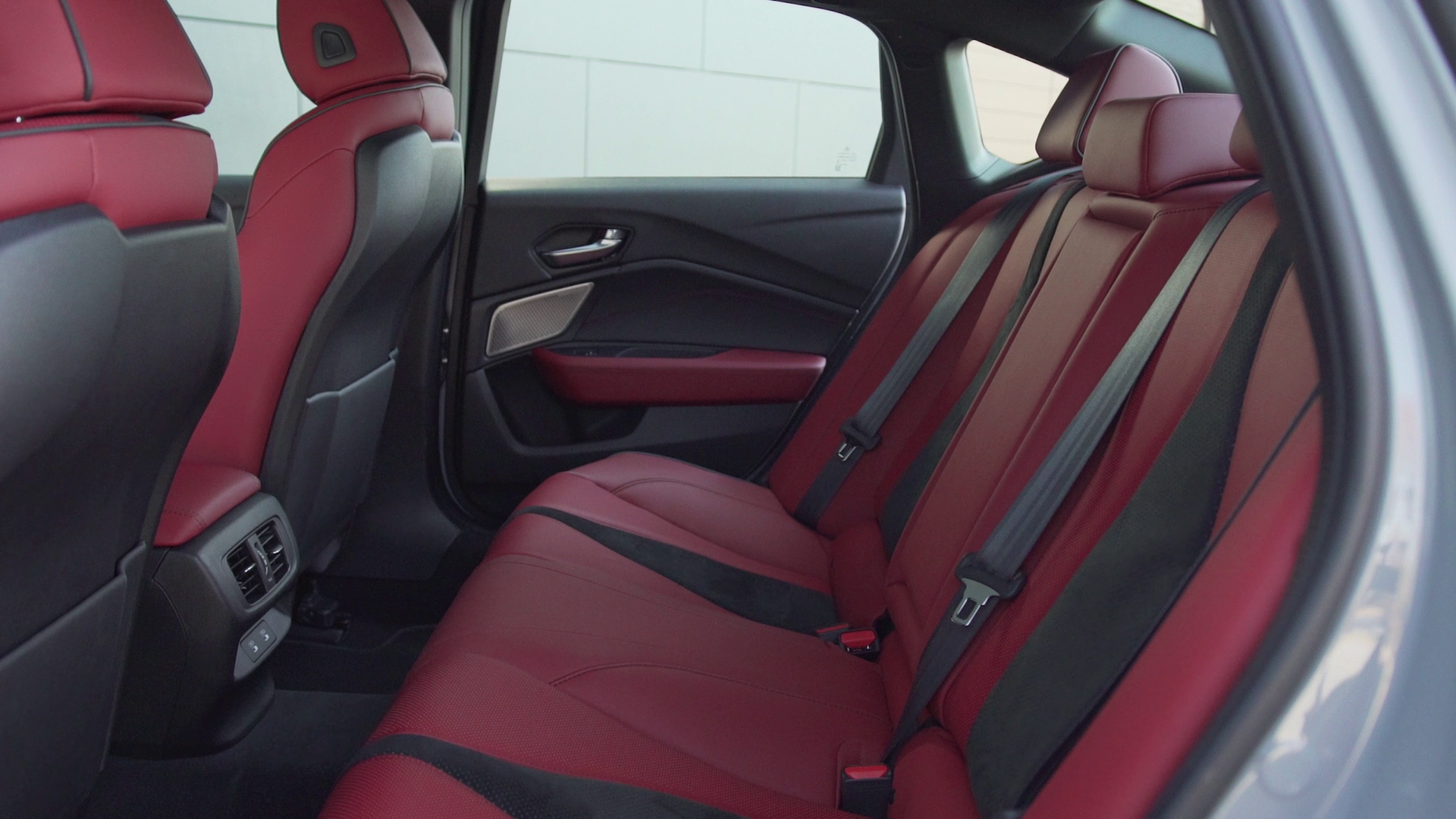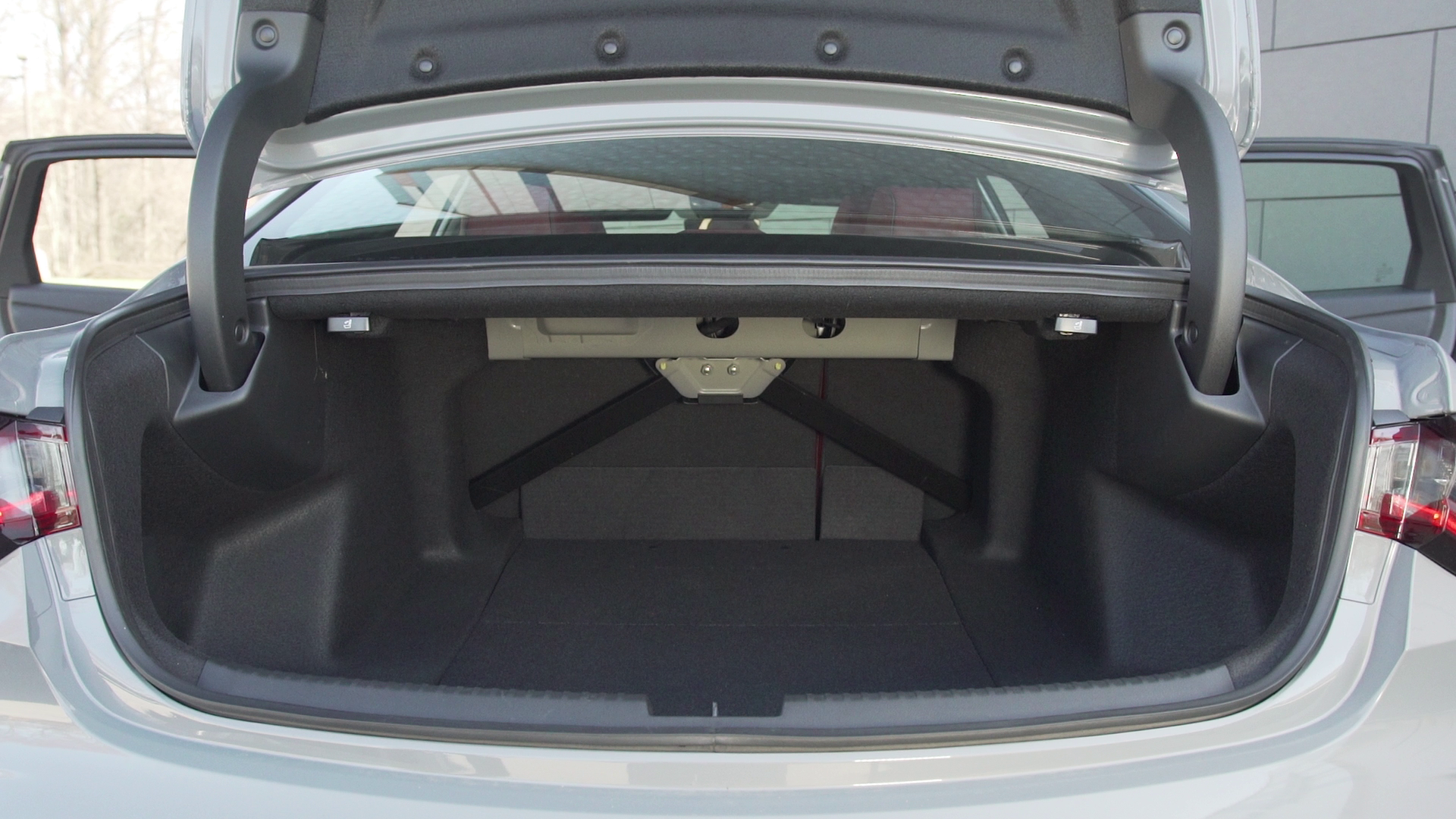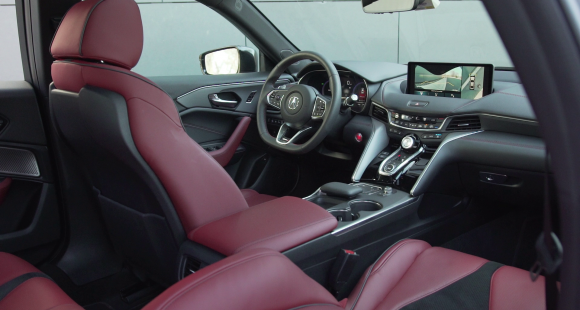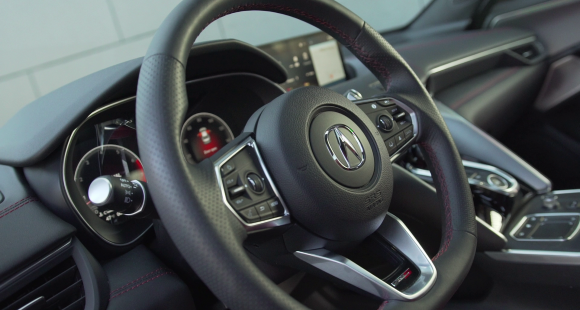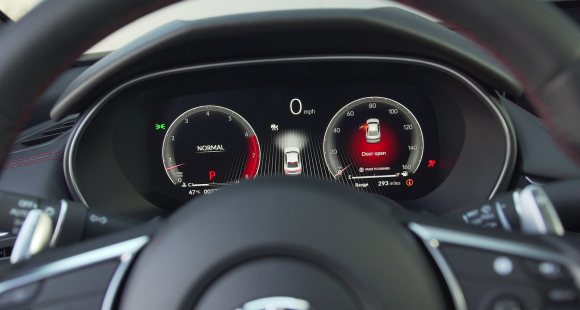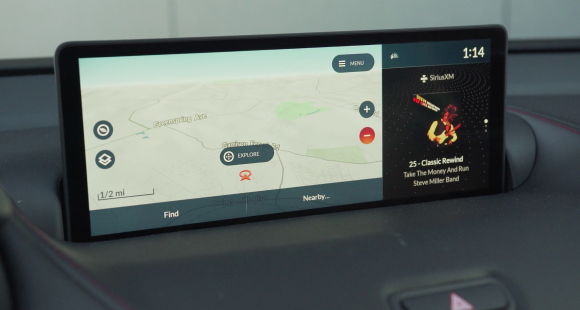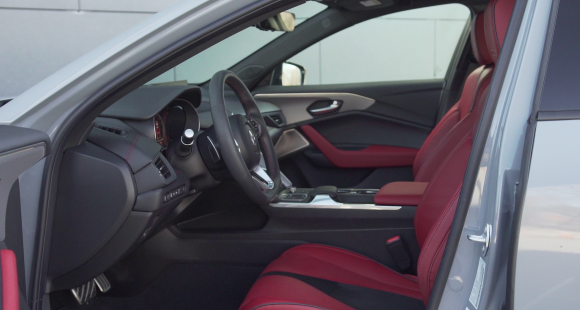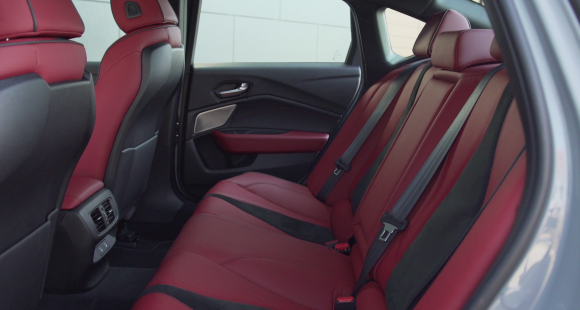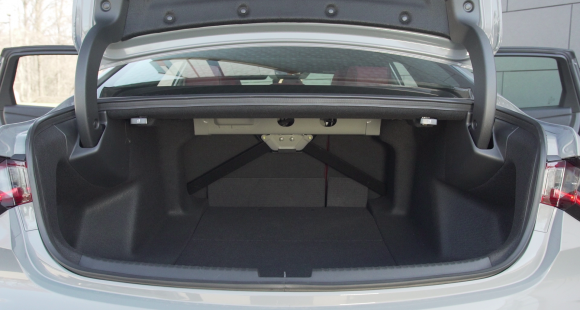2015 Ford Mustang
50 years have passed since the Ford Mustang entered the corral, creating the iconic pony car segment. While a lot has changed since then, the Mustang really hasn’t changed that much at all. But as Ford launches the all-new, 2015, 6th generation Mustang, it does so with some of the biggest changes ever. So, saddle up, as the legend of Mustang continues anew.
The 2015 Ford Mustang is arriving at just the right time. Car sales are back up to pre-recession levels, and the original pony car has been facing some the toughest competition ever from the re-launched Chevrolet Camaro and Dodge Challenger. In addition to that, this will be the first Mustang with true international sales intentions.
Powering this mission are three engines, each with more than 300-horsepower. The 5.0-liter V8 is back of course, now with more muscle…435–horsepower…thanks to tweaked cylinder heads and intake. The 3.7-liter V6 also returns; with its intake redesigned, due to a lower hood. It results in a loss of horsepower, now at 300 even.
Between the two, at 310–horsepower, is a new 2.3-liter EcoBoost turbo I4 with 320 lb-ft. of torque. It’s not the first turbo-4 under a Mustang hood, that would be the SVO of ’84 to ’86, but it is the first Ford to use a twin-scroll unit.
 Transmissions hang with tradition, a 6-speed manual or 6-speed automatic for all engines.
Transmissions hang with tradition, a 6-speed manual or 6-speed automatic for all engines.
Styling, always a Mustang fan hot button, is less altered than originally feared. Retro-reinvented, the Mustang 6.0 is lower, wider, and even with a familiar long hood profile, far more aggressive. Wheelbase stays at 107.1-inches and overall length is shortened by 2/10ths of an inch.
The blunt nose and hallmark grille opening are tweaked to fit the rest of the Ford brand. There’s new HID headlights, and a fresh take on LED signature lighting.
There’s clearly more of a fastback shape towards the backend, and the new rear fascia is “euro diffuser” in design. The glossy tail light panel features updated horses for 4 & 6 cylinders, and a GT badge for V8s. The 3-bar tail lights return, but look more 3-dimensional. Turn signals are still sequential.
17-inch wheels are standard, GTs get 18’s; 19’s are optional on any. Brembo brakes come with GT or EcoBoost Performance Packages.
A classic appearance continues inside too, with the dual hump dash. But, gauges, the center stack, and electronic aids are much more in the now. You’ll also find better materials, more knee space thanks to a slimmer lower dash, a passenger’s side knee airbag, and there’s even more room in the glove box.
Toggle switches and a start button are brought into the mix, and cup holders have been shifted over providing freer access to the shifter. Even base models get keyless entry and a back-up camera.
 Selectable drive modes are new, adjusting steering effort, engine and transmission response, as well as stability control intervention for normal, snow/wet, sport, and track conditions. And of course there are track apps, accessible through the gauge panel information screen, as is Launch Control.
Selectable drive modes are new, adjusting steering effort, engine and transmission response, as well as stability control intervention for normal, snow/wet, sport, and track conditions. And of course there are track apps, accessible through the gauge panel information screen, as is Launch Control.
The steering wheel is smaller in diameter, but gets lots of new switchgear added to it. The trunk opening is larger, and the amount of space behind it has grown a tiny bit, now at 13.5 cubic-ft.
Nostalgia aside, we found the new-gen ‘stang is now much more about driving with the much anticipated independent rear suspension now standard on all models. You don’t really notice it in sedate daily driving, however. But, dive deep into a corner, start feeding in some power, and the car hunkers down, propelling you out like never before.
Should you encounter a bump mid-way through that corner, it becomes even more obvious; as the rear end is a whole lot less busy, happy to follow in line instead of trying to overtake you every chance it gets. Such a big change out back forced Ford to extensively rework the front suspension as well. That’s a win-win too.
As for how the Mustang feels with 4-cylinder power: it feels just fine. There’s good response, great mid-range torque, and even some respectable sound, though not at full song.
 Nothing sounds like a V8 of course and the GT is still where it’s at if you’re looking for Mustang bragging rights. Manual 0 to 60 nudges four and a half seconds. Drag racers, or the burnout challenged, will also be happy to hear that all GT’s come standard with a line lock.
Nothing sounds like a V8 of course and the GT is still where it’s at if you’re looking for Mustang bragging rights. Manual 0 to 60 nudges four and a half seconds. Drag racers, or the burnout challenged, will also be happy to hear that all GT’s come standard with a line lock.
Mustang base prices are up slightly; $24,425 for the V6. That’s still less than a base Camaro or Challenger. EcoBoost I4 is just above that at $25,995, while V8 GTs start at $32,925.
We think the 2015 Ford Mustang, while a little less nostalgic, is much farther reaching, even without its international sales intentions. It is clearly a much better sporty coupe than ever before, and not just in the margins. And that progression will ensure that the Mustang legend will not only live on, but continue to lead.
Specifications
- Engine: 5.0 liter V8 / 3.7 liter V6 / 2.3 liter
- Horsepower: 435 / 300 / 310
- Torque: 400 lb-ft./ --- / 320 lb-ft.
2024 Toyota Tacoma
It’s A New Tacoma That’s A Lot Like The Old One
Many small trucks have come and gone over the years. But one that has stayed the course is the Toyota Tacoma. Dominating segment sales for nearly two decades, an all-new fourth-generation Tacoma has arrived for 2024 with some of the biggest changes in its history. So, let’s see what this new taco truck has to offer.
In the truck world, the all-new mid-size 2024 Toyota Tacoma is a really big deal. Completely redesigned, it’s now built on Tundra’s full-size high-strength steel frame. There’s also an available coil spring multi-link rear suspension, all turbocharged engine lineup, new XtraCab two-seater that does away with the Access Cab’s rear doors, improved comfort, and of course, new tech.
Now, we agree with many of you on how ridiculous the truck and SUV market has become with all the off-road packages, so for this test we ordered up an SR5, just one step up from base. It came equipped with Toyota’s 2.4-liter I4 turbo, which outputs 278 horsepower and a stout 317 lb-ft of torque when equipped with the eight-speed automatic. You can still get a six-speed manual, though the engine is slightly detuned to 270 horsepower and 310 lb-ft of torque. And just to muddy things up further, the base SR gets an even more de-tuned version with 228 horsepower and 243 lb-ft.
If you need more power than all of that, reinforcements are on the way with Toyota’s i-FORCE MAX hybrid with an electric motor integrated into the transmission for a combined output of 326 horsepower and 465 lb-ft of torque, 200 more than the old V6.
Most Tacomas will be four-door DoubleCabs which get either a 5- or 6-foot bed; two-door XtraCabs come with just the six-footer. Bed walls are slightly taller than before, and a power tailgate is now available. Max towing is 6,500-lbs.
At our Mason Dixon test track, our automatic SR5 didn’t feel overly powerful, but with a slight chirp of the tires, it was off to 60 mph in a quick 6.2-seconds. Shifts were very smooth, and though working hard, this turbo-four is much quieter than the V6.
Shifts were very smooth, and though working hard, this turbo-four is much quieter than the V6.
It felt plenty stable as speeds increased, but with the standard leaf spring suspension, that “big truck” feel was evident in our slalom course as well. There was quite a bit of body roll, and the very soft feel of a lifted truck, that had us backing off early and the truck just slowly lumbering its way through the exercise. There was good steering feel, and the truck did whatever we asked, it just wasn’t in a hurry to do it. If you’re looking for a sportier car-like experience, you might want to look elsewhere in the segment, as the Tacoma feels more like a Tundra than a Rav4, which of course is what many truck buyers want.
In panic braking runs, the ABS was working overtime and there was a lot of nosedive. But, with short stops from 60 of just 108 feet, we were not surprised or alarmed.
Even with fresh styling, it remains easily recognizable as a Tacoma. Just a little more chiseled in some places, smoother in others. Ground clearance is up a tiny bit, with a max of 9.5 inches allowing for 33-inch tires. The biggest visual changes are inside, where the Tacoma has finally joined the 21st Century. Standard infotainment touchscreen is 8 inches, paired with a 7-inch gauge cluster. Higher trims get a 14-inch touchscreen and 12.3-inch digital gauge display. Seats feel great up front, although it doesn’t feel any roomier than before. Rear seat legroom is still tight for adults, but there is more storage underneath the seats.
Government Fuel Economy Ratings for an SR5 4X4 automatic are 20-City, 23-Highway, and 21-Combined; we averaged 21.3 mpg of Regular. For a slightly worse than average Energy Impact Score; 14.2-barrels of annual oil consumption, with 6.9-tons of CO2 emissions.
Pricing starts with SR at $32,995 and our SR5 coming in at $37,695; from there it works through several TRD levels to arrive at top Limited at $53,595. Four-wheel drive is standard on Limited and most TRD trims, available in all other trims except for the TRD PreRunner, which is rear-wheel drive only.
Pickup trucks of all sizes continue to be incredibly popular here in the U.S., and we’ve certainly seen a resurgence of compact and midsize trucks recently. Tacoma fans will be happy to know that their midsize 2024 Tacoma hasn’t gone soft. It’s more rugged than ever. Designed here, with American buyers in mind, the new Tacoma is the modernized version of their beloved pickup that Toyota fans have been waiting for. So, Happy Taco trucking!
Specifications
As Tested
- Engine: 2.4-liter I4 turbo
- Horsepower: 228
- 0-60 mph: 6.2 seconds
- 60-0 Braking: 108 feet (avg)
- MW Fuel Economy: 21.3 mpg (Regular)
- Transmission: 8-speed automatic
- Torque: 243 lb-ft.
- 1/4 Mile: Track Under Maintenance
- EPA: 20 City | 23 Highway | 21 Combined
2024 Acura TLX Type S
A Grown-Up Sport Sedan Looking To Do Boy Racer Things
While the recent and highly successful relaunch of the Acura Integra has been hogging most of the brand’s headlines, the Integra is not the only sporty car that Acura builds. In fact, it’s the all-wheel-drive TLX Type S that remains Acura’s quickest and best handling sport sedan. Add in numerous updates for 2024 and it clearly demands our attention once again.
We are indeed looking closer at this updated 2024 Acura TLX Type S sport sedan and noticing quite a few changes. For starters, it’s one very aggressive looking four-door. Most of that due to the Type S upgrades which include a front splitter, rear spoiler and diffuser, big quad exhaust tips, Brembo brakes, and 20-inch wheels, though all TLXs get updated front fascias and grillwork for ’24.
Inside the tech-heavy interior, things look and feel great with upscale materials and fine stitching. A new 12-inch Precision Cockpit Digital Instrument cluster, ELS Premium Audio, wireless phone charging, and ambient lighting are now standard on all TLXs.
The upgraded infotainment screen grows from 10- to 12-inches and features faster processing, though after spending a year with an Integra and its touchscreen, having to use the touchpad interface here in the TLX is a clear step back in terms of functionality. Updates specific to the Type S include a surround view camera and a 10.5-inch Head Up Display. And there’s no taking a back seat to luxury in the back seat of the TLX; plenty of comfort and space for adults, plus some new charging ports.
A 272-horsepower 2.0-liter I4 turbo comes in the standard TLX, but thankfully the Type S’s fire-breathing 3.0-liter turbo V6 is still under the hood here, putting out 355 horsepower and 354 lb-ft of torque. No changes for either engine, but we’ll take that as a great thing these days. And there may not be any additional power, but there is sharper throttle response in Sport+ mode than before, so it will give you the impression that you’re working with a little more. Transmission remains a 10-speed automatic with paddle shifters on the steering wheel. Super-Handling All-Wheel-Drive is standard with the Type S and A-Spec, only the base TLX remains front-wheel-drive only.
Spring maintenance was still in progress at our test track and things weren’t quite fully prepped for the season just yet, so the Type S’s all-wheel-drive traction was much appreciated; as it allowed us to pounce off the line and rip to 60 in just 5.0 seconds flat, a tenth quicker than the last Type S we tested in ’21. It ripped through first and second gears quickly, before settling down a bit as it worked its way to the end of the quarter-mile in 13.5 seconds at 104 mph.
And there may not be any additional power, but there is sharper throttle response in Sport+ mode than before, so it will give you the impression that you’re working with a little more.
While far from a noisy car, Acura has installed some thicker carpet to quell what little road noise was apparently seeping in. Thankfully, they didn’t do anything to dampen engine or exhaust noises, as they sound fantastic.
This TLX scooted through our cone course quite efficiently, behaving as if on the proverbial set of rails. Type S tuning includes additional bracing for the chassis, plus firmer settings for the adaptive dampers that are part of the double-wishbone front and multi-link rear suspension.
Acura’s SH-AWD has been torque-vectoring power between all four wheels since long before that was commonplace; and its technical heavy-handedness is evident, as while it was slicing through the exercise with precision, it wasn’t always obvious how it was all happening. The Brembo brakes felt great, and were fade-free, but at 125 feet from 60 mph, stops were closer to family sedan territory than the typical sport sedan.
But there’s no skimping on active safety here, with full Acura Watch features including Lane Keeping Assist, Collision Mitigation Braking, Road Departure Mitigation, and Advanced Pedestrian Detection standard on all TLXs.
Government Fuel Economy Ratings are 19-City, 25-Highway, and 21-Combined; we averaged a good 23.6 mpg of Premium. That’s a slightly below average Energy Impact Score; using 14.2-barrels of oil yearly, while emitting 6.9-tons of CO2.
A simplified pricing structure now leaves you with three TLX choices, Technology, A-Spec, and Type S; things start at $46,195; this Type S will set you back $58,195.
Is it worth it? Well, it all depends on what your priorities are. If you’re looking for a super comfy luxury commuter, then probably not. But, if you’re looking for a superior driver’s car, with the most performance you can get in an Acura sedan, and plan on putting it to good use, then the 2024 Acura TLX Type S is absolutely worth it.
Specifications
- Engine: 3.0-liter turbo V6
- Horsepower: 355
- 0-60 mph: 5.0 seconds
- 60-0 Braking: 125 feet (avg)
- MW Fuel Economy: 23.6 mpg (Premium)
- Transmission: 10-speed automatic
- Torque: 354 lb-ft.
- 1/4 Mile: 13.5 seconds at 104 mph
- EPA: 19 City | 25 Highway | 21 Combined







